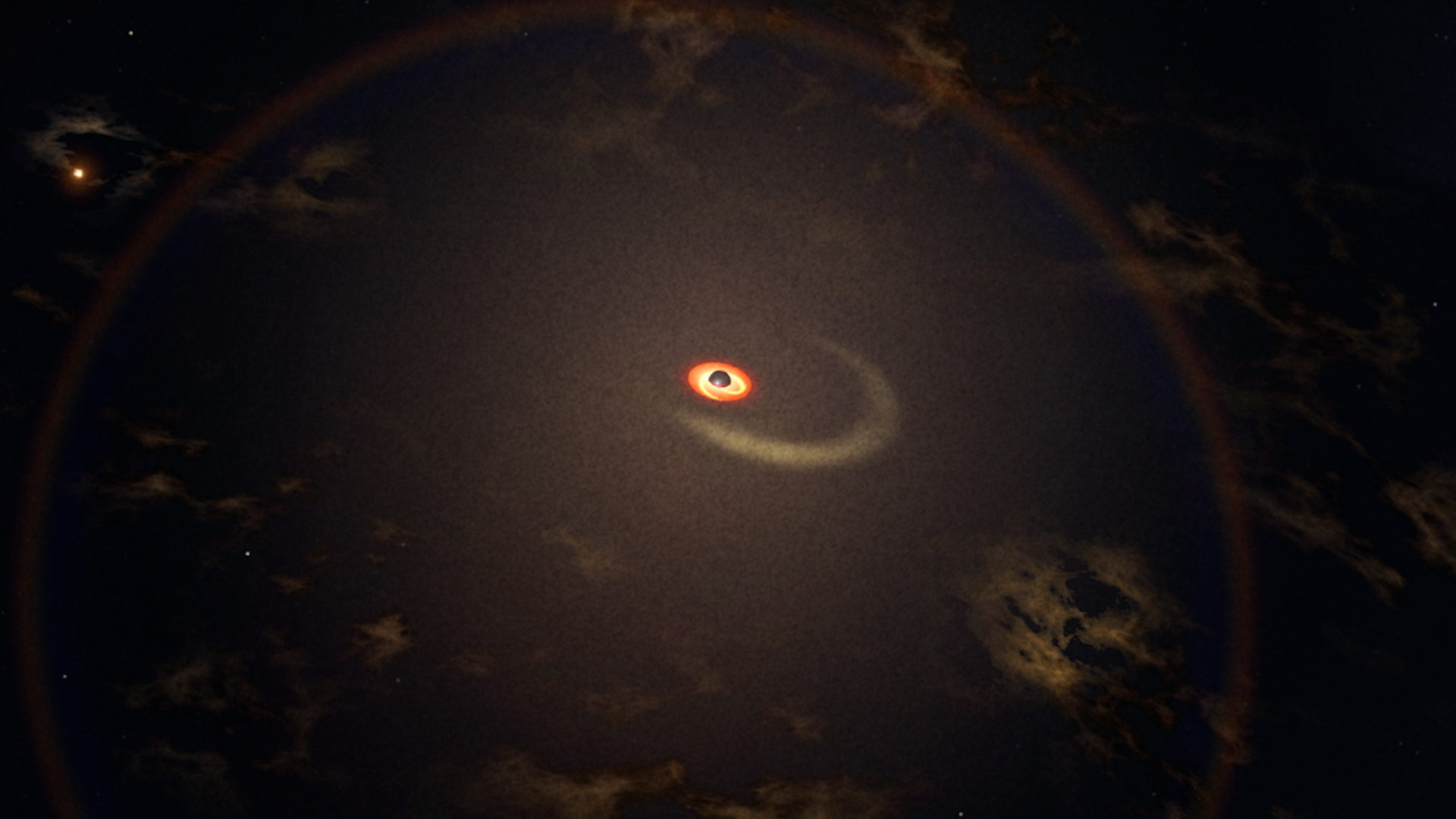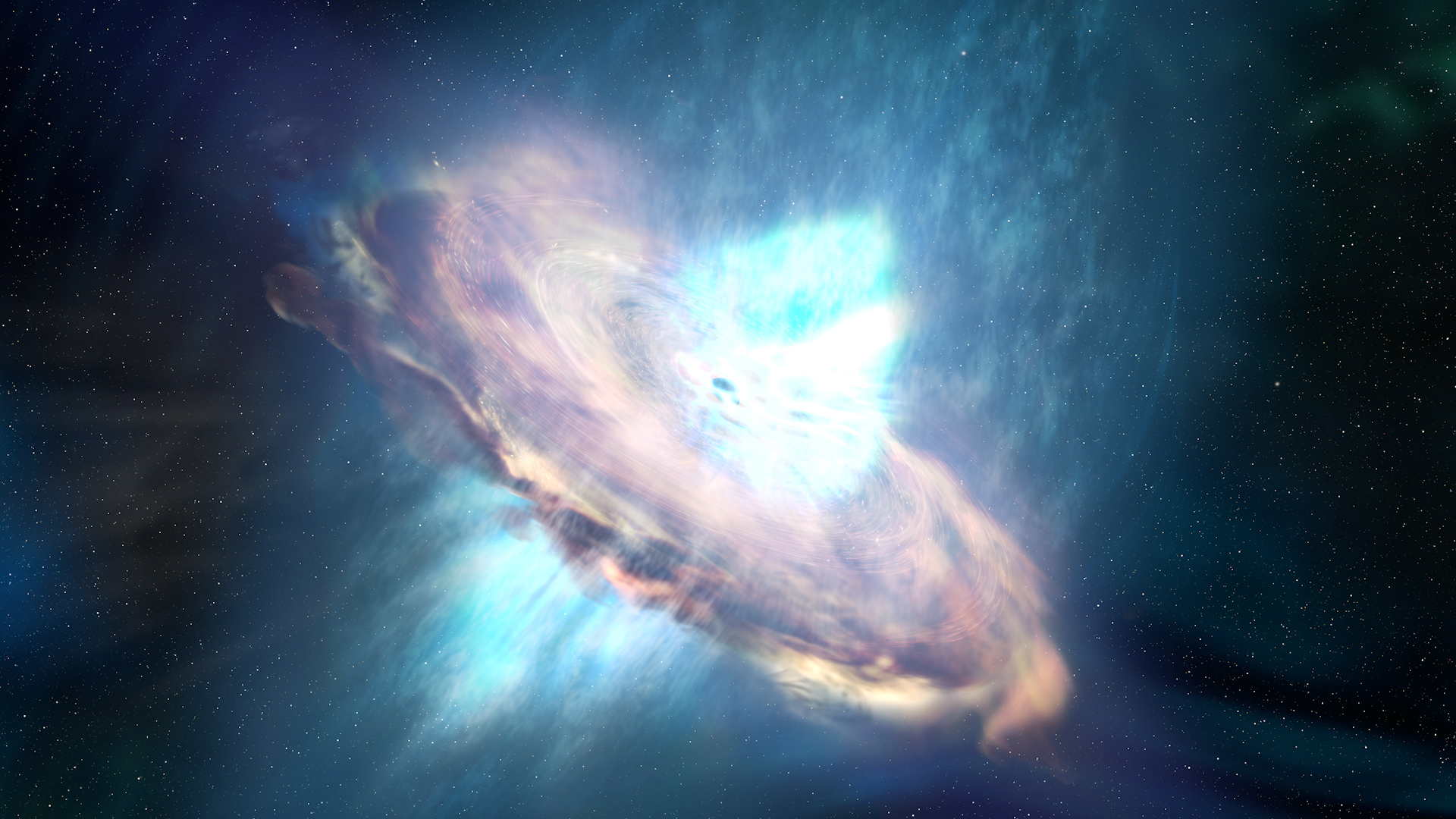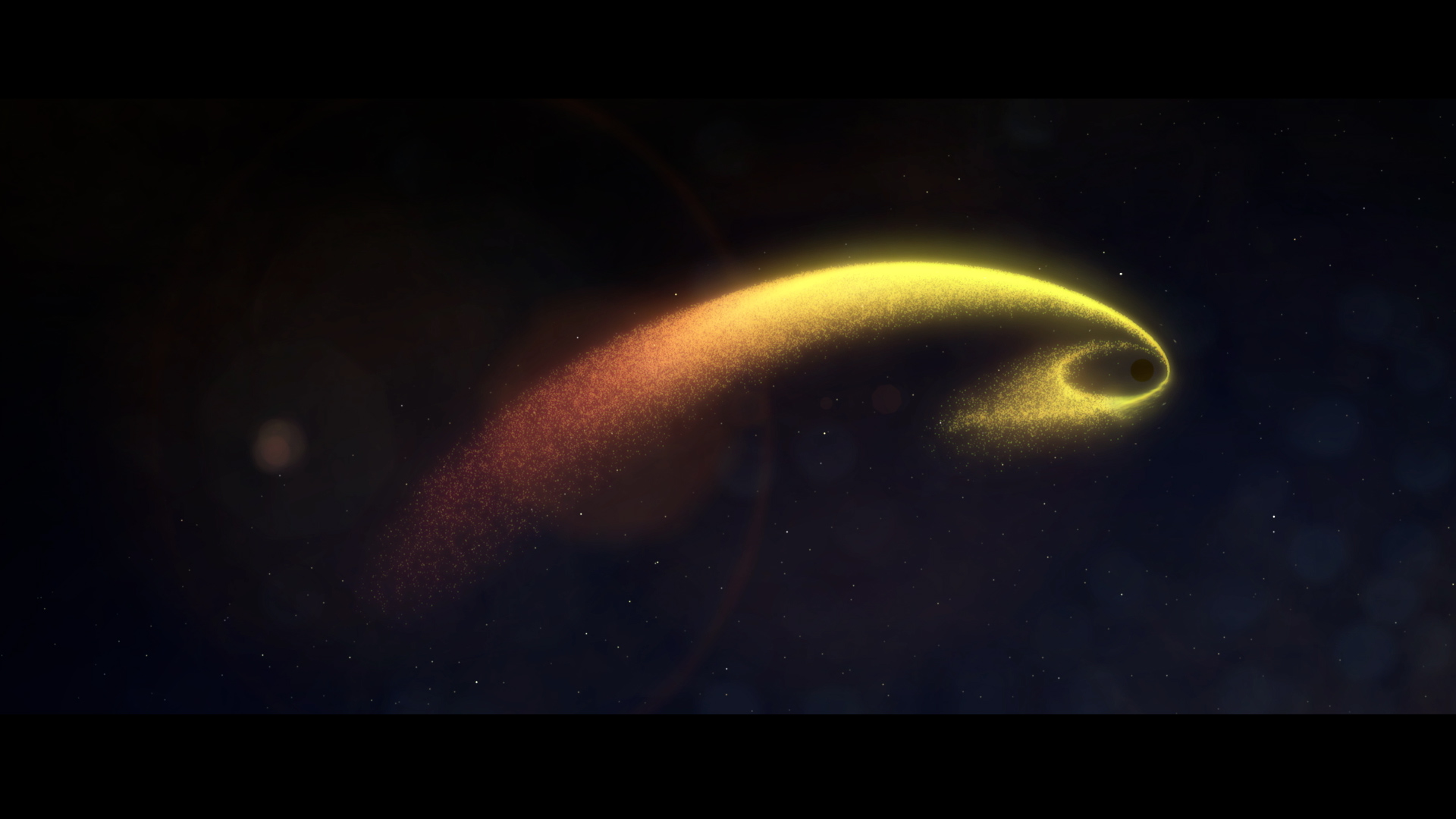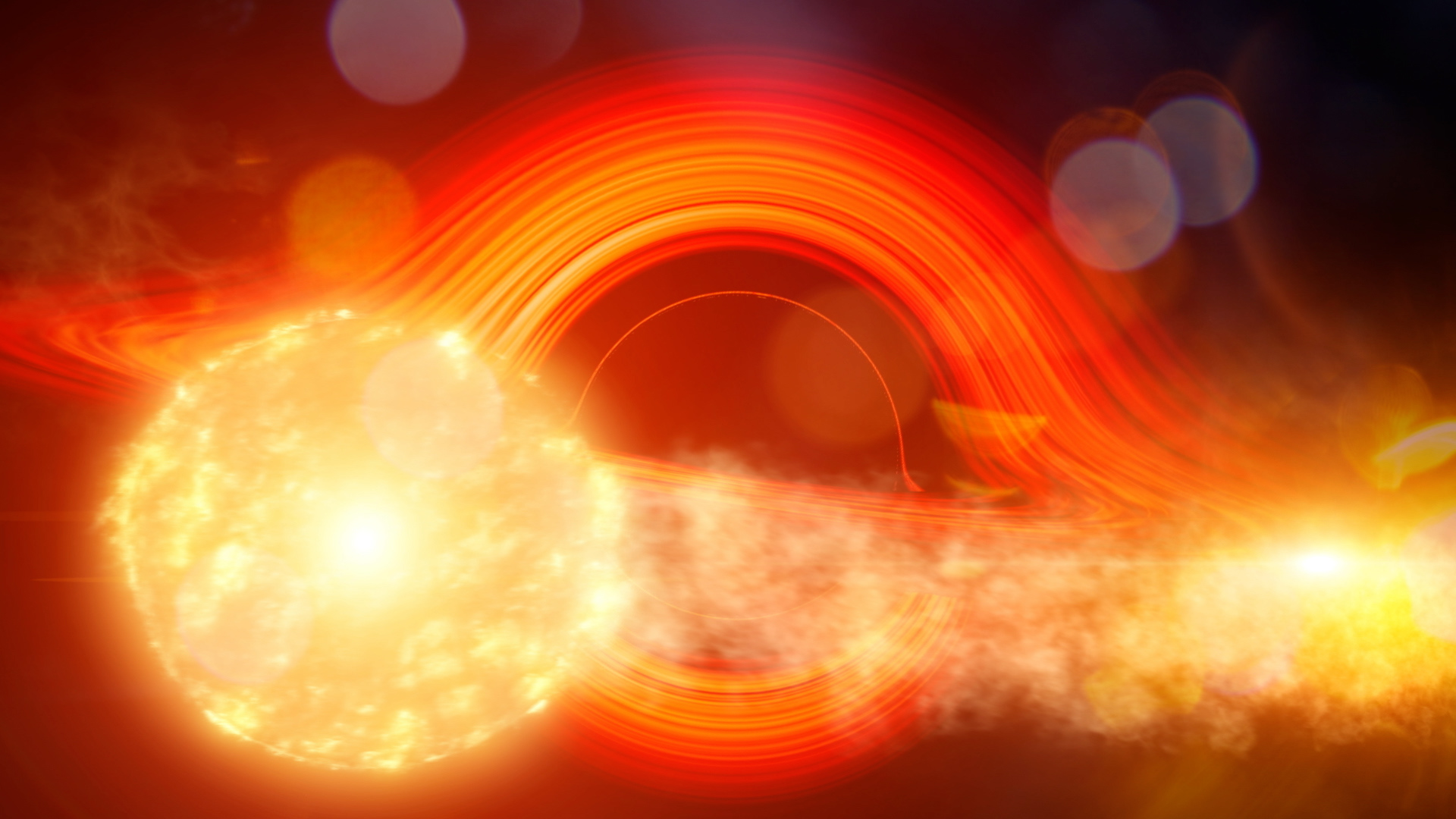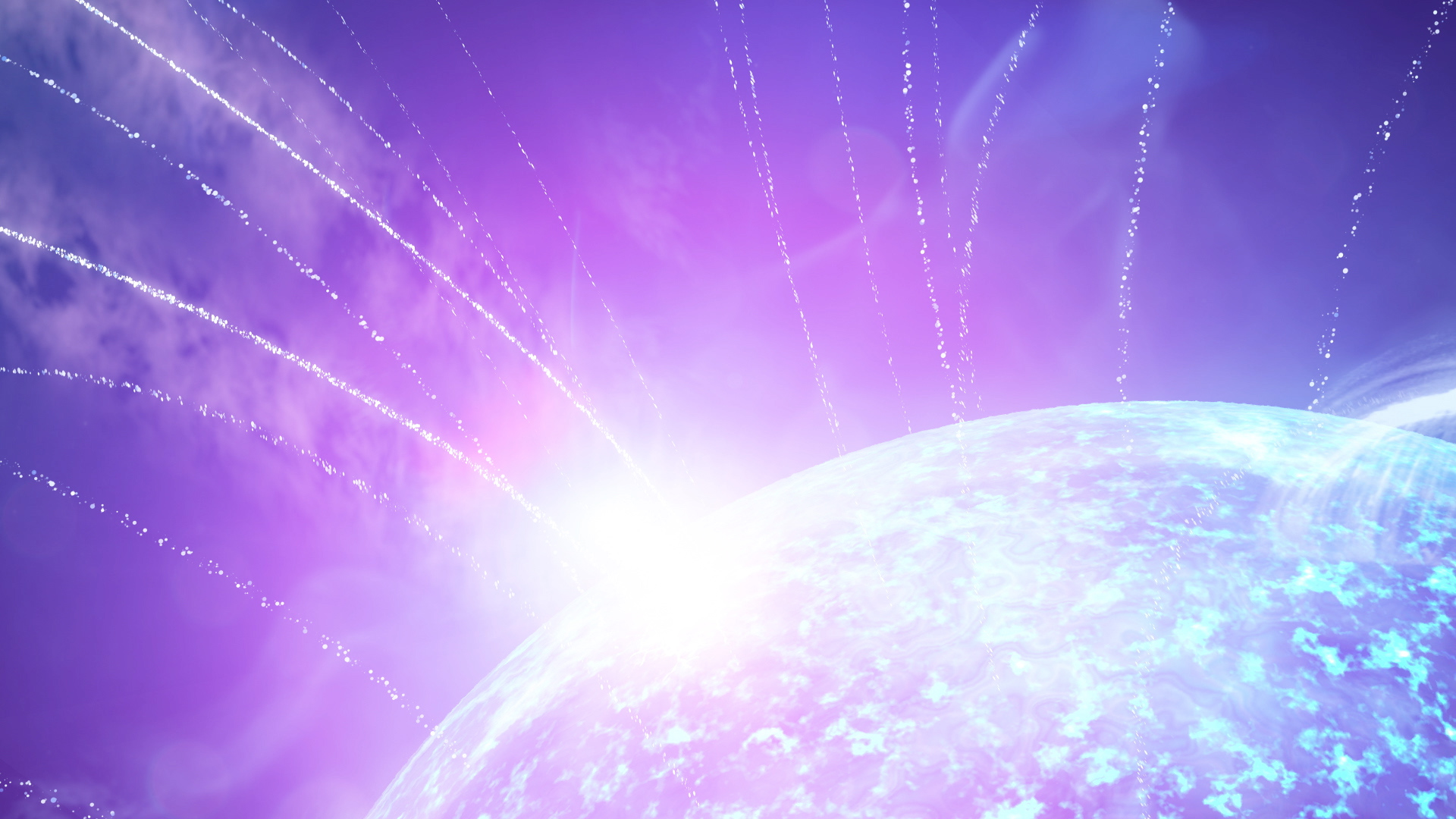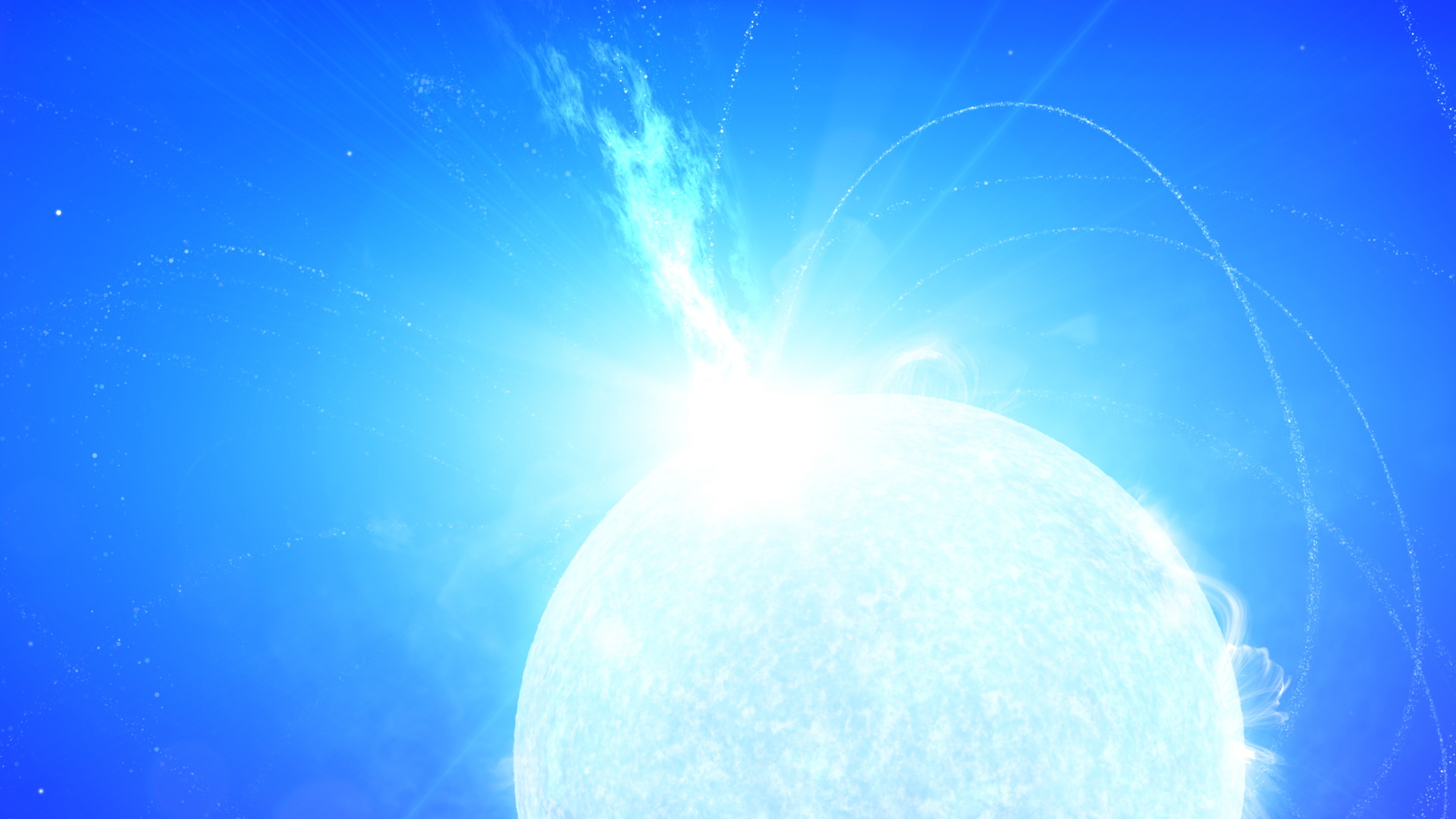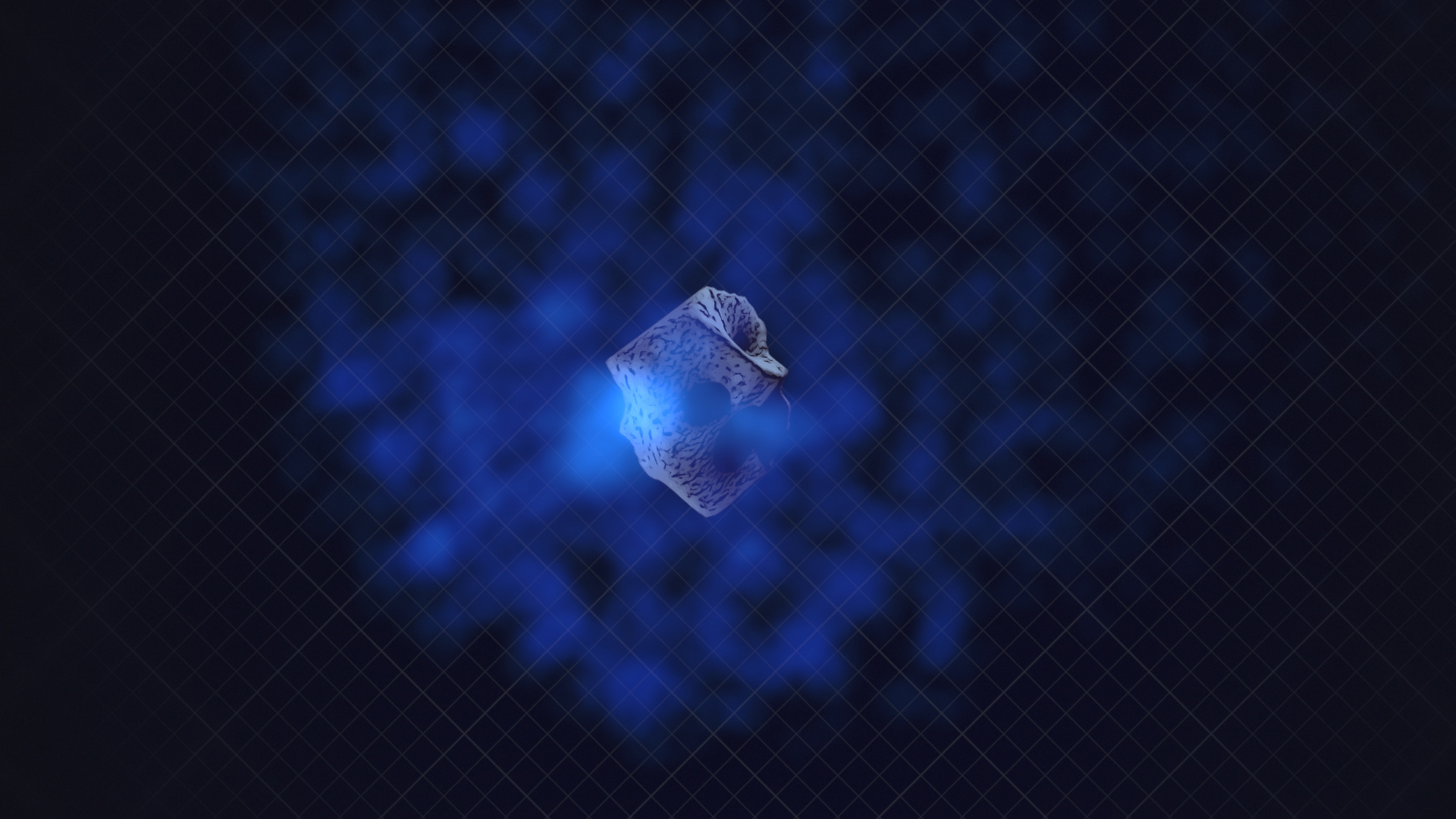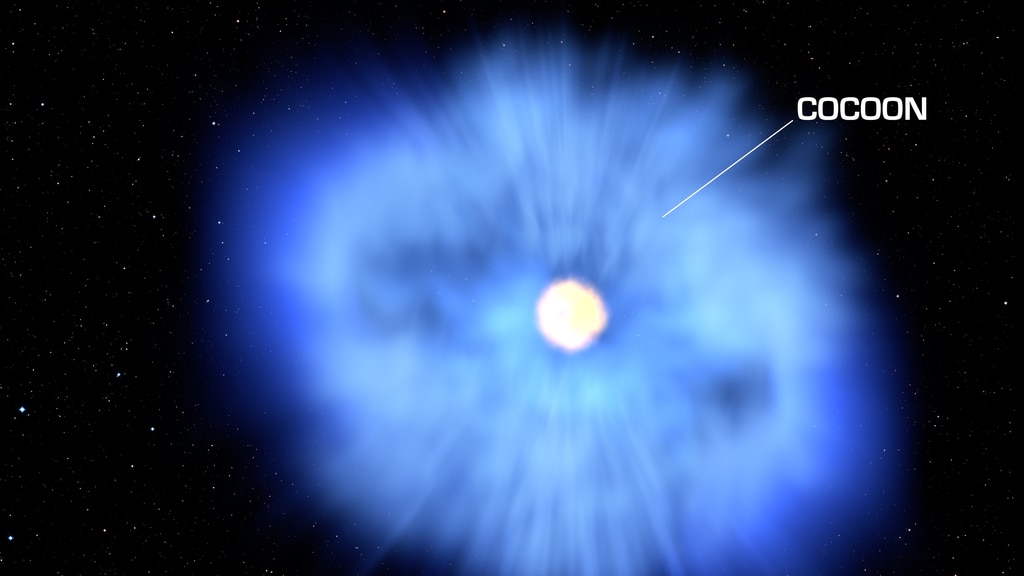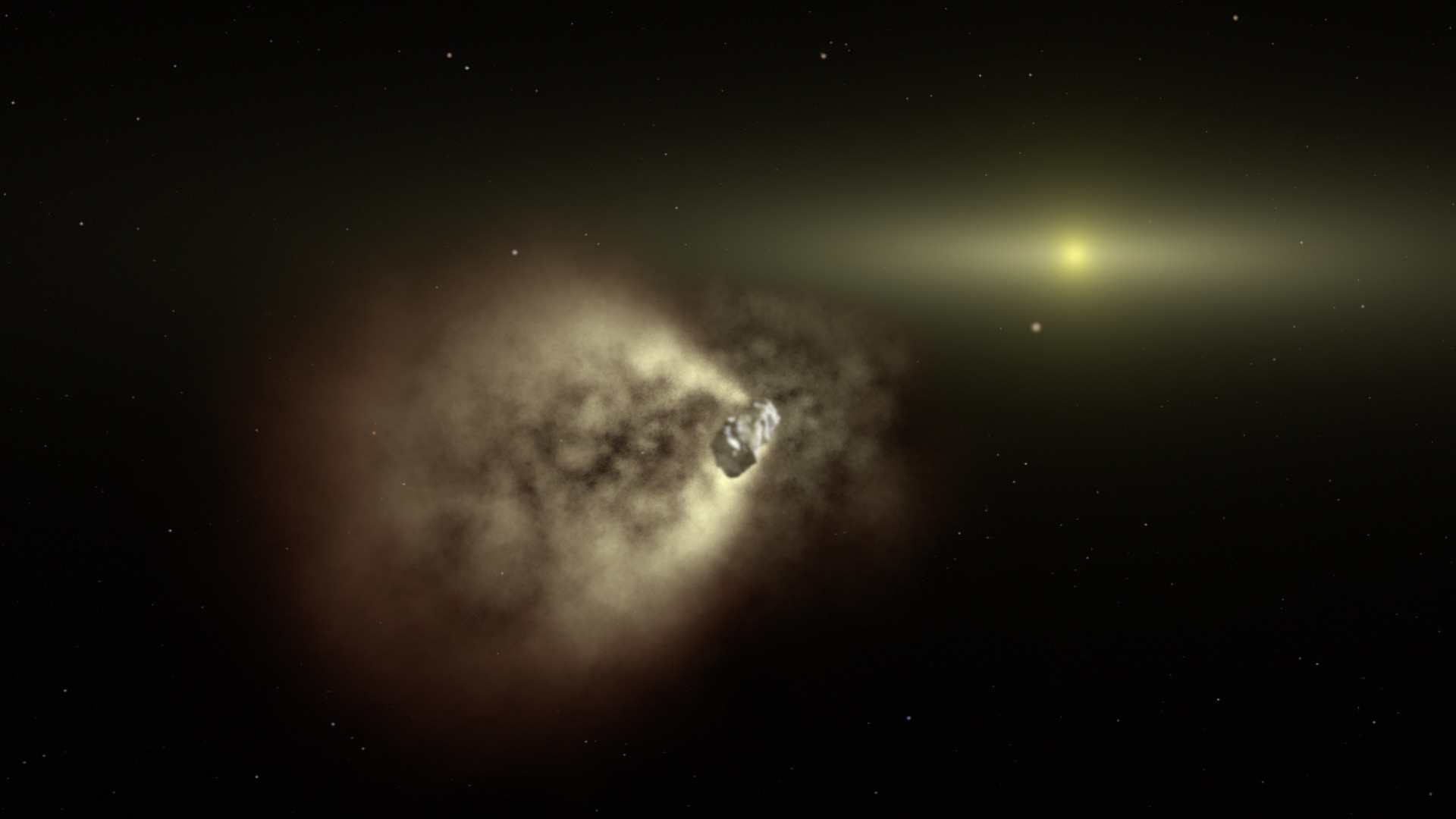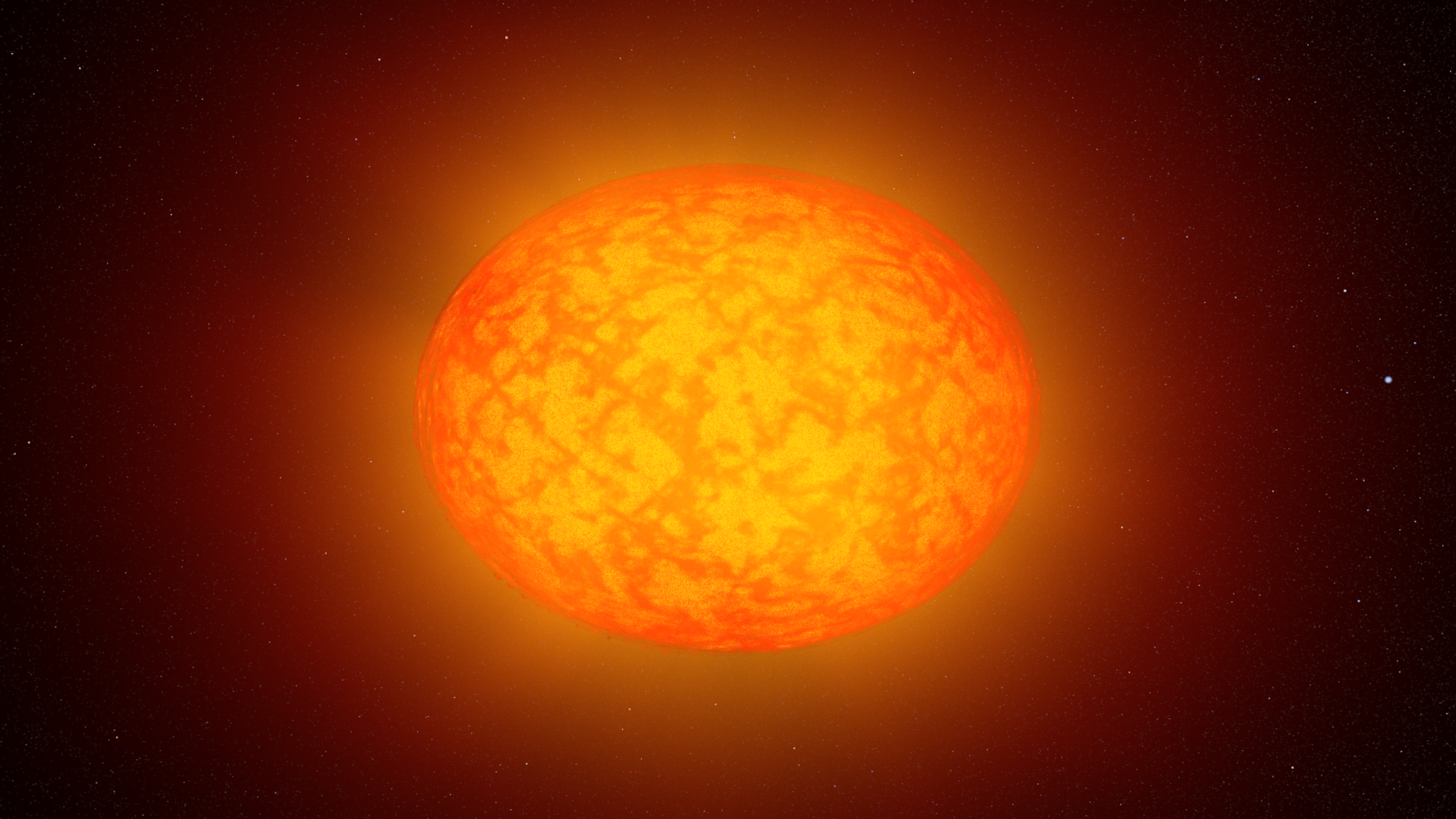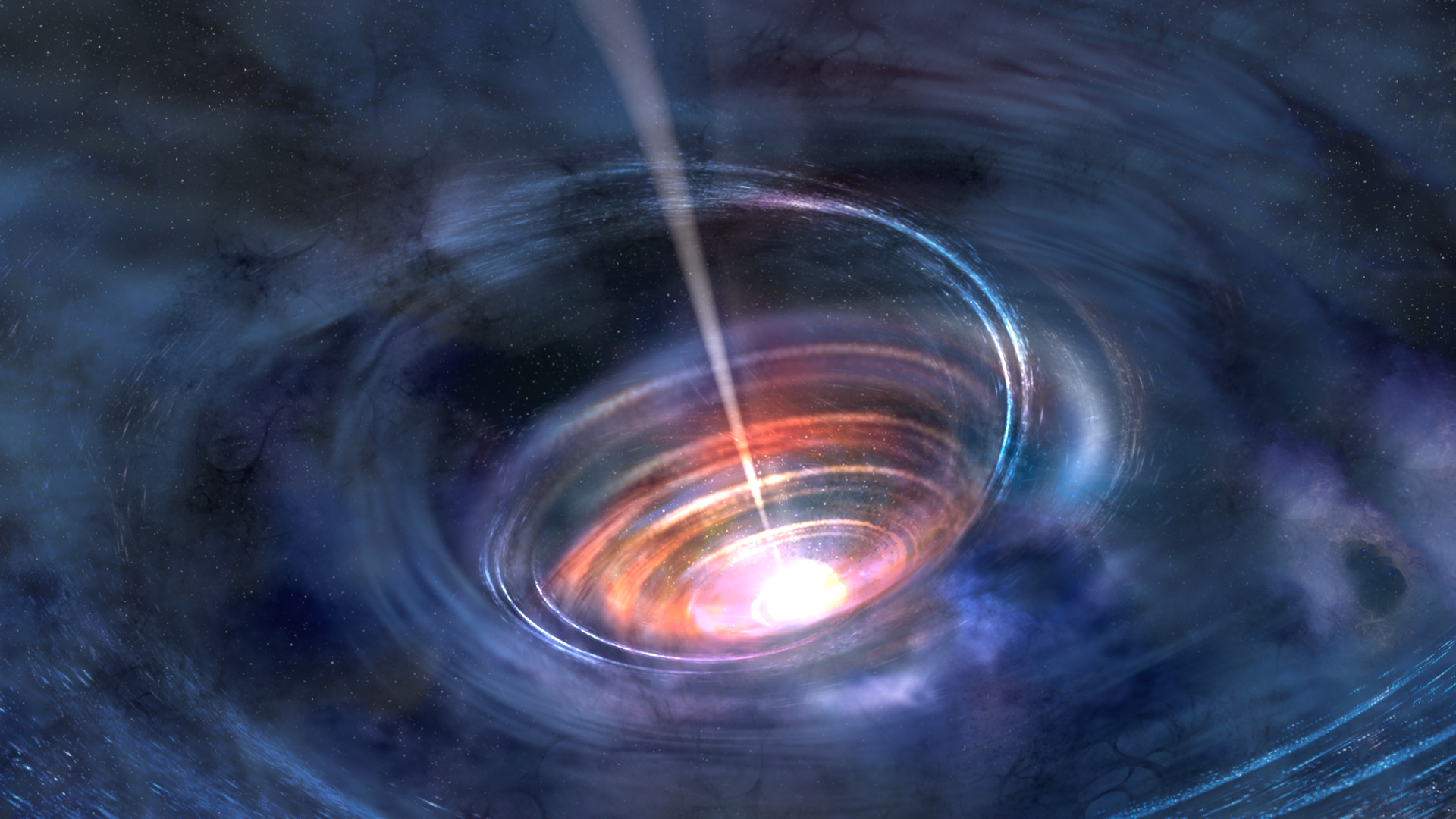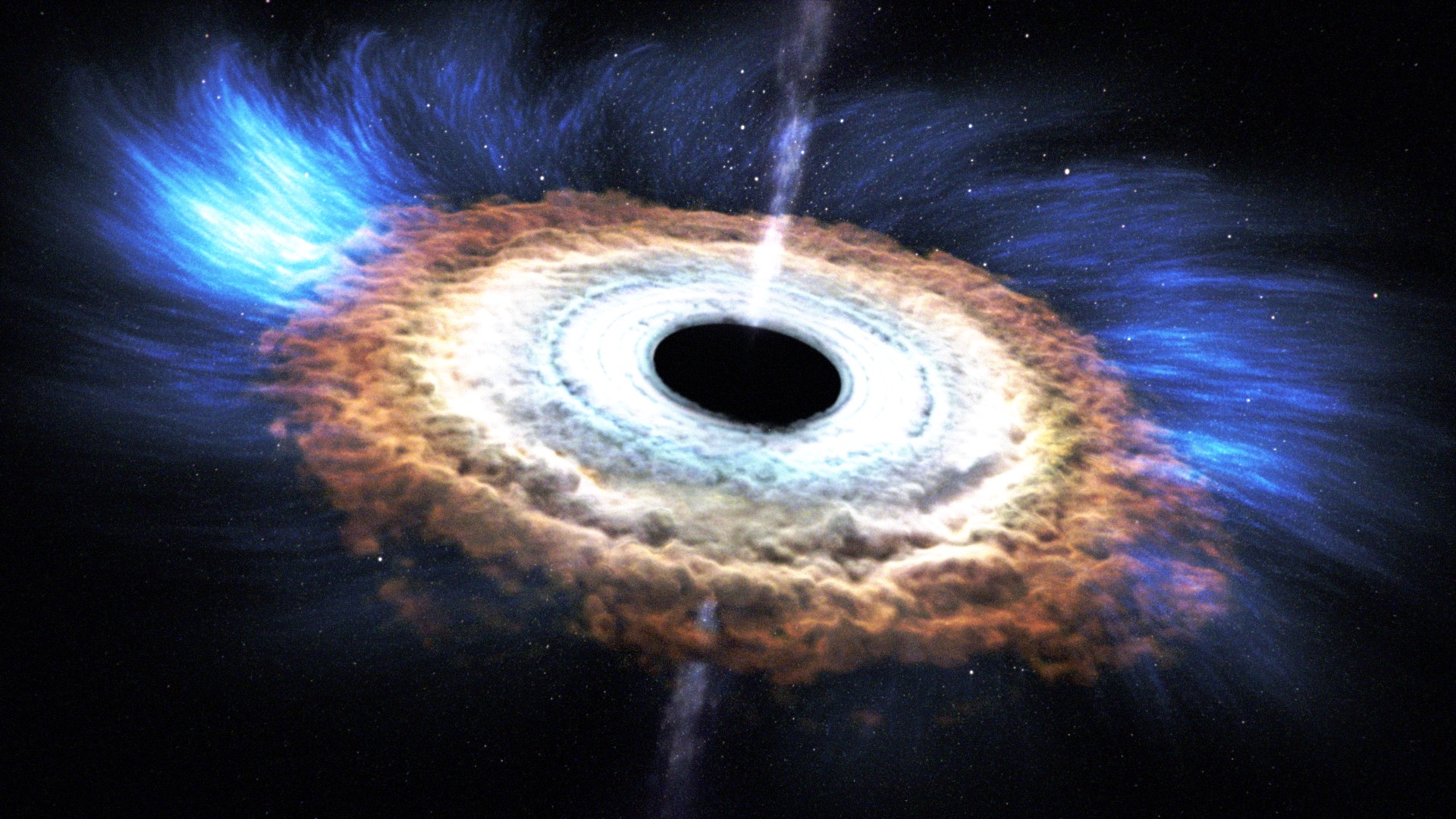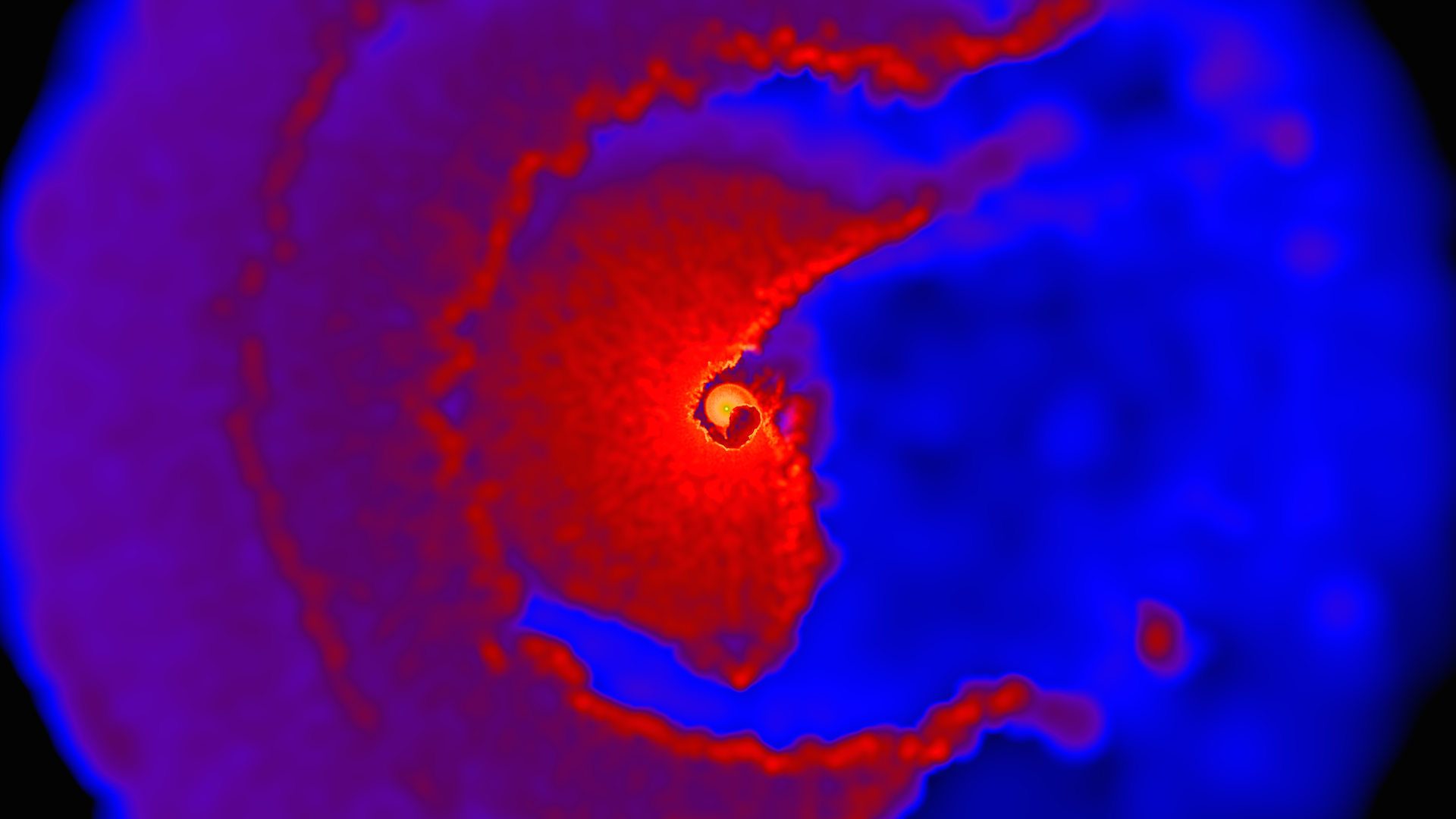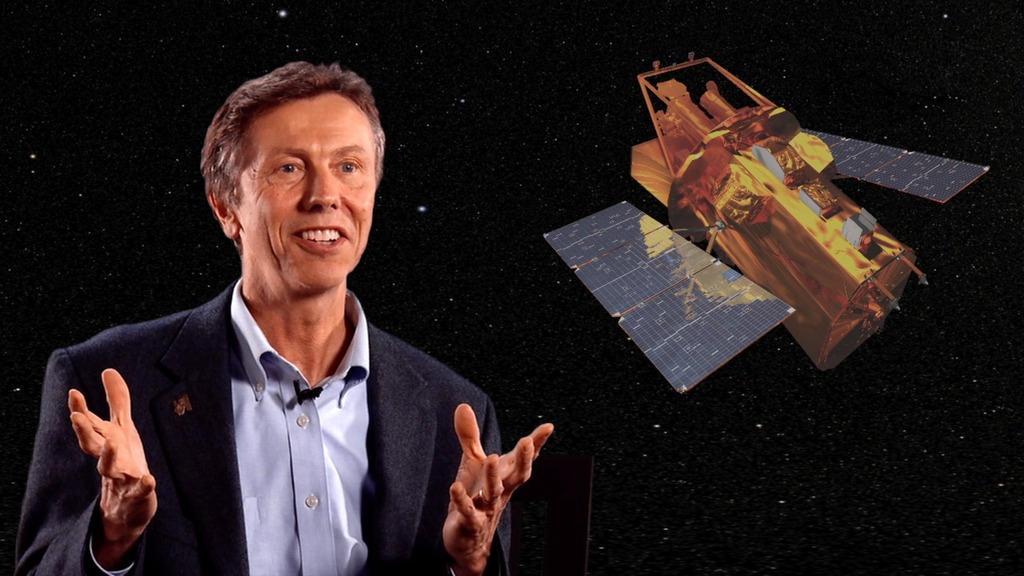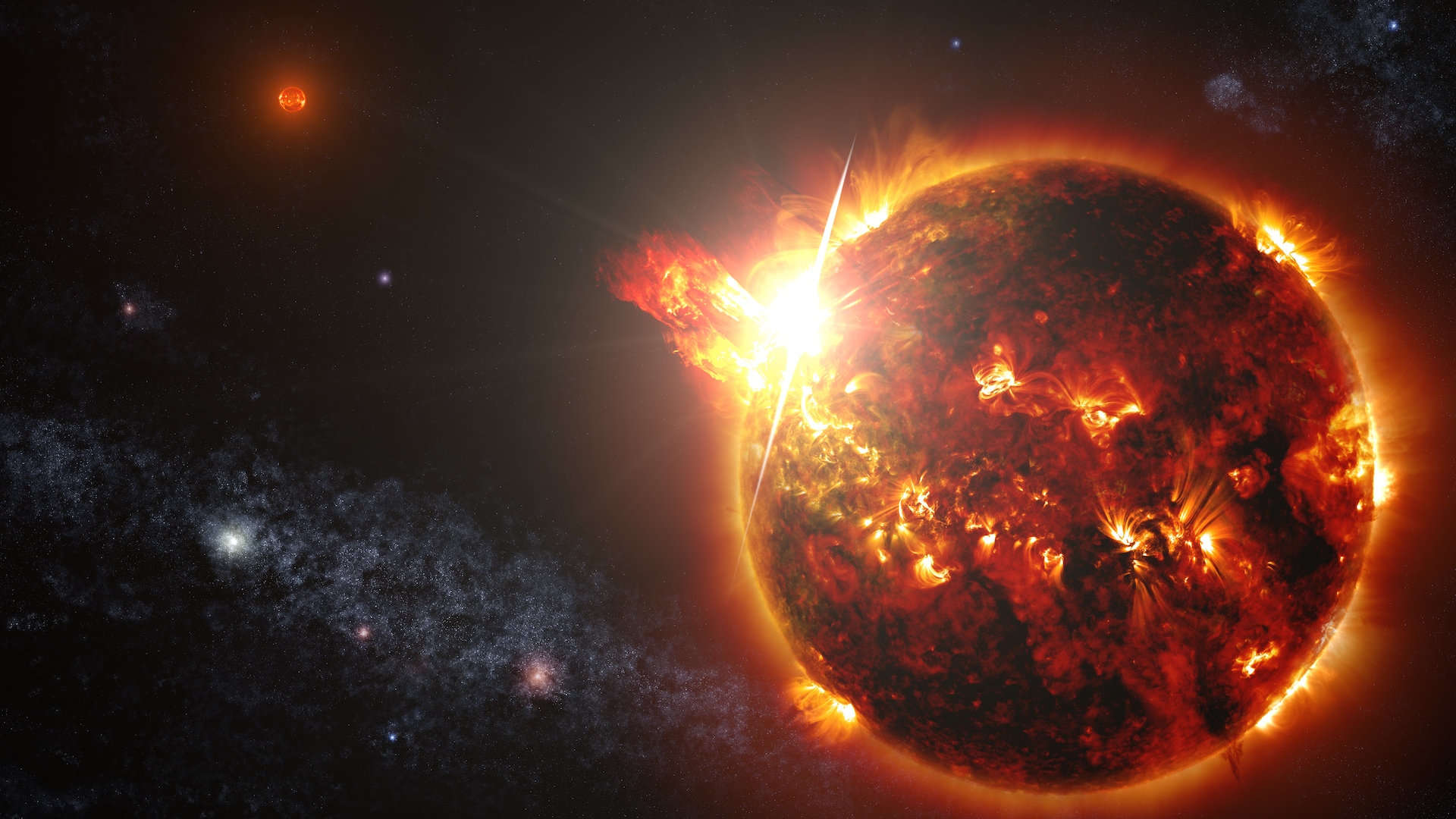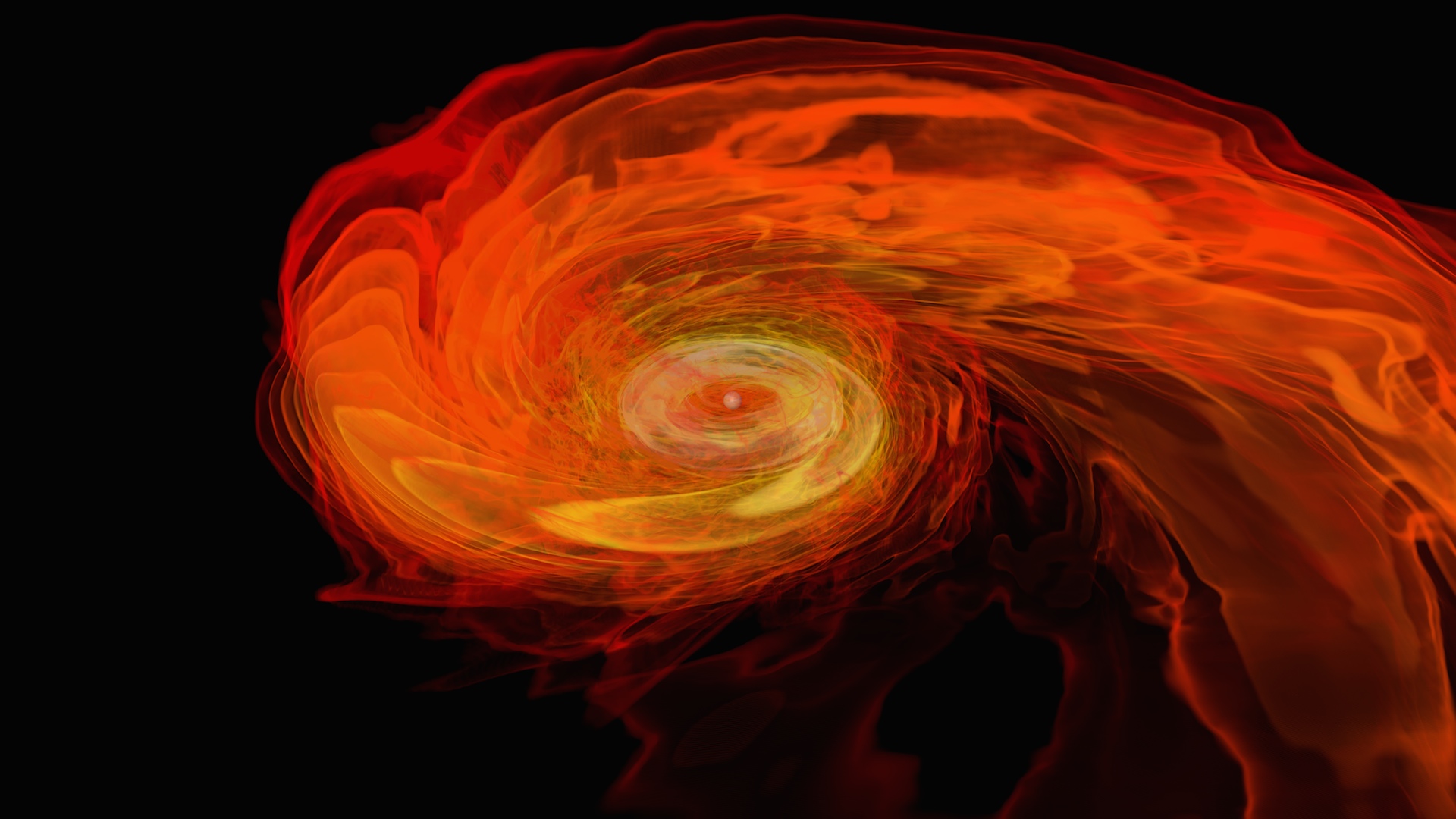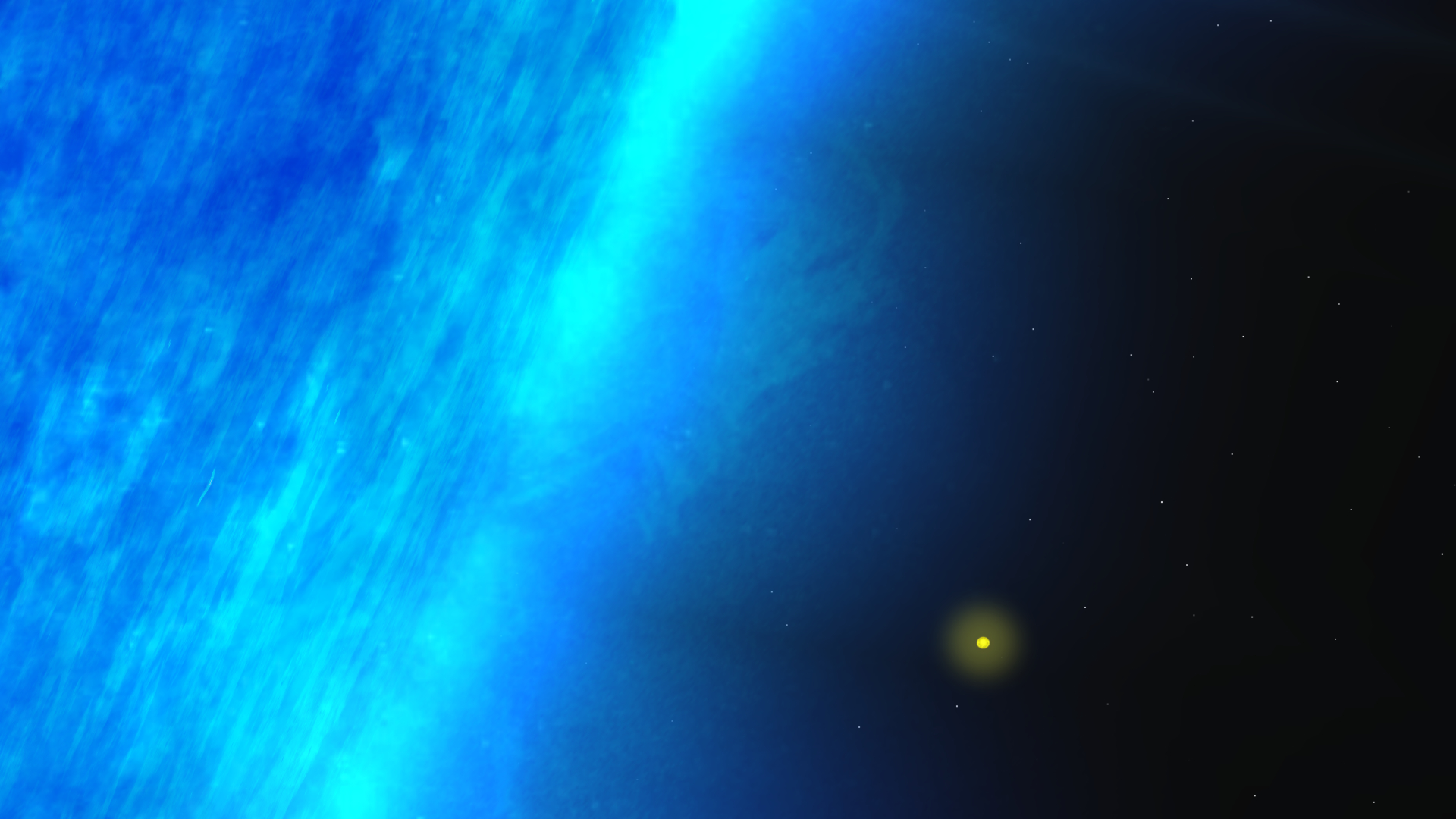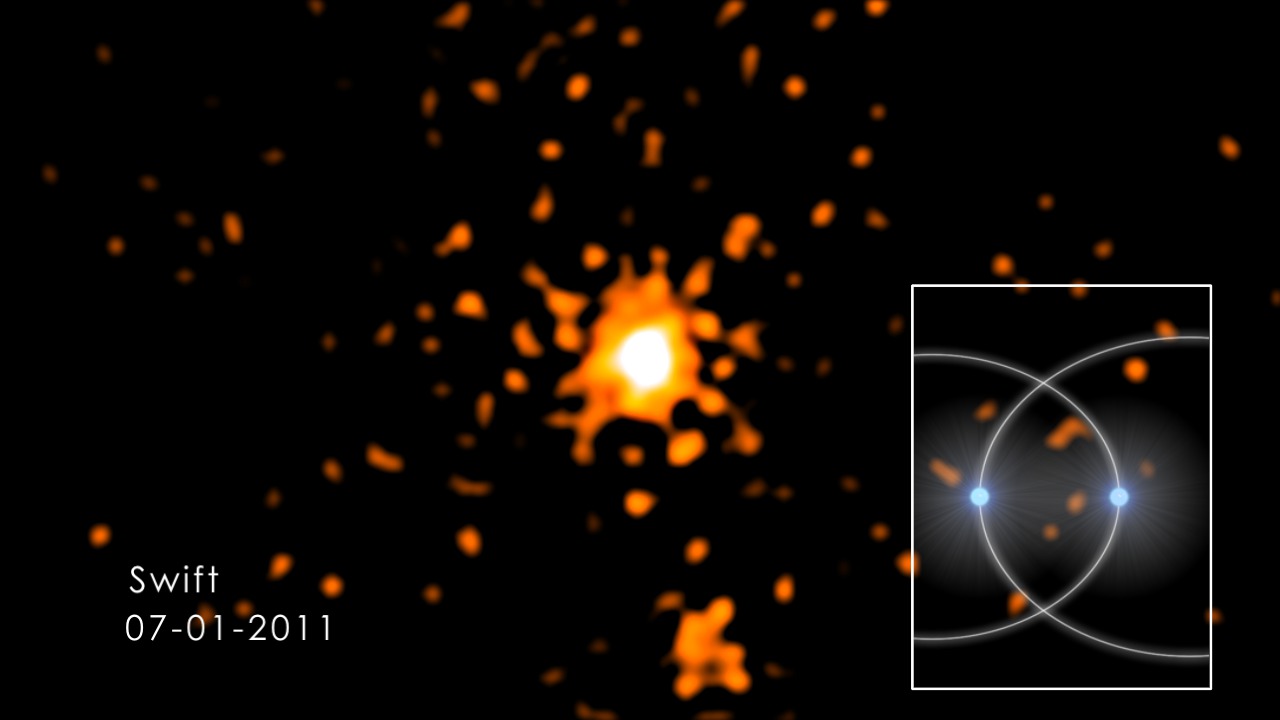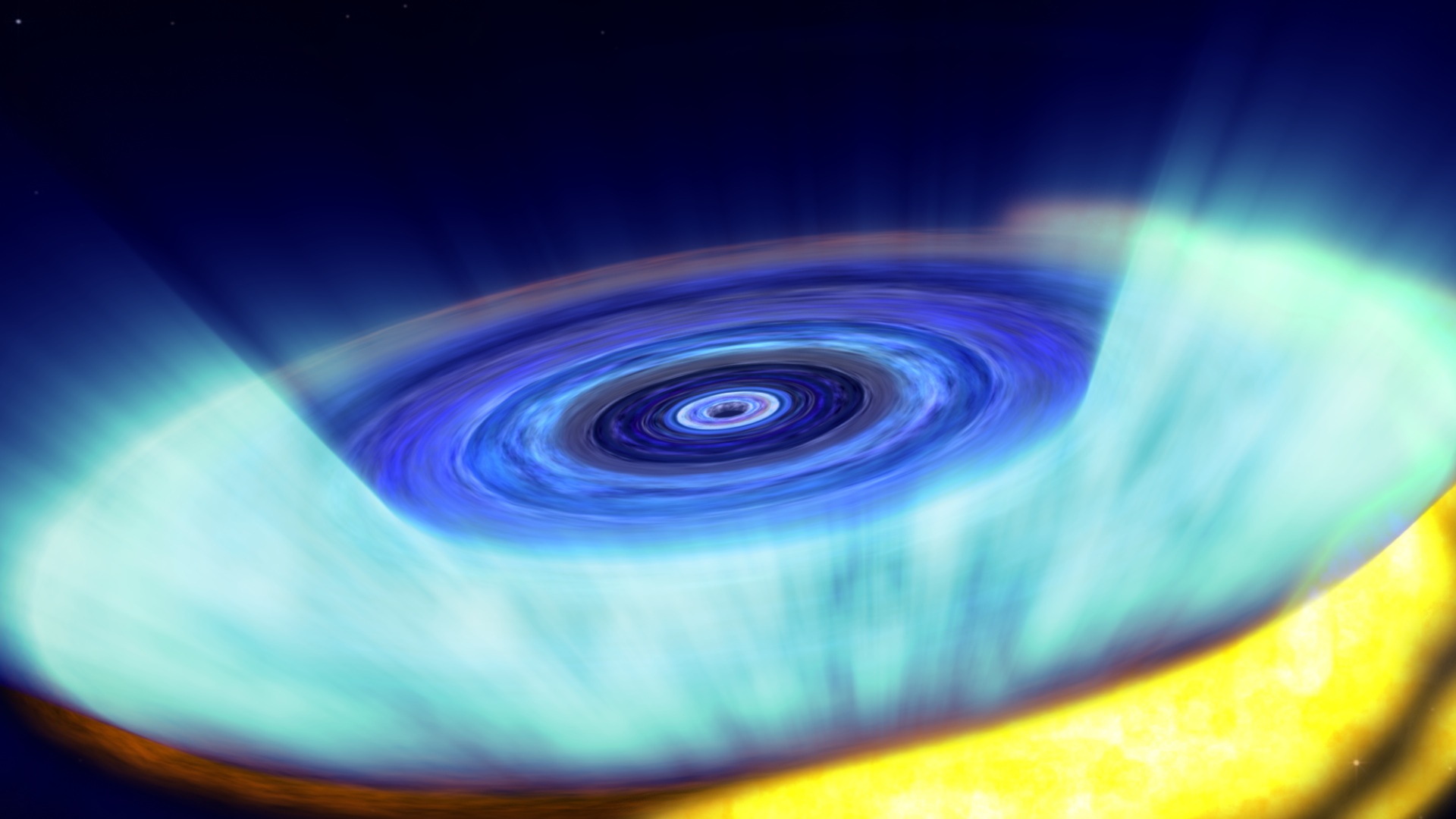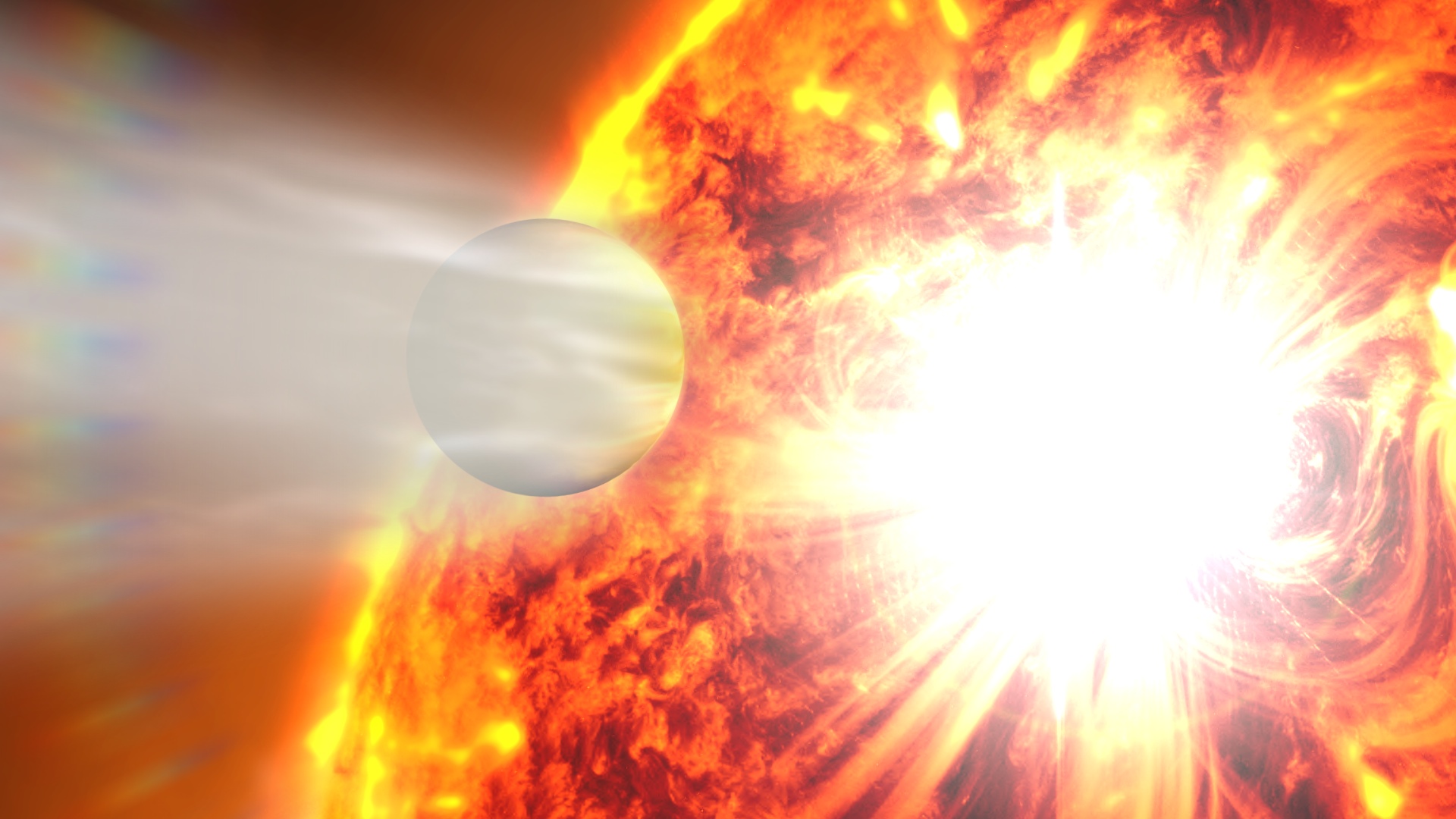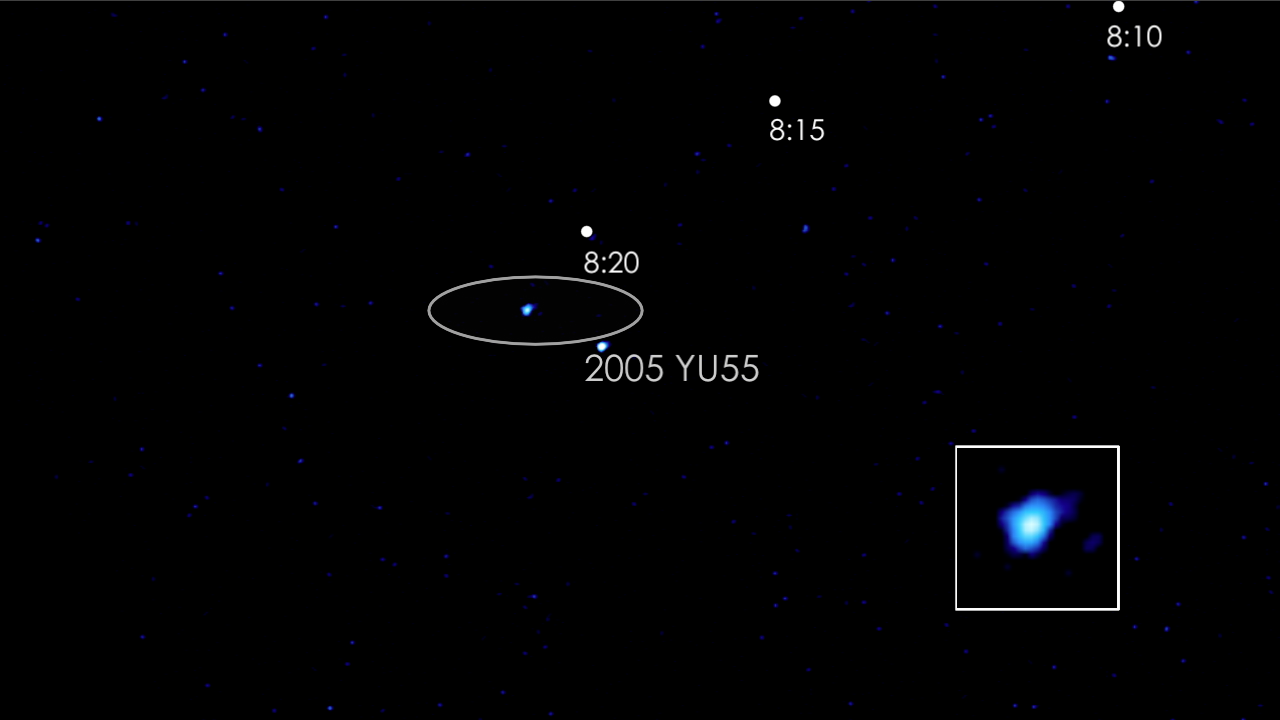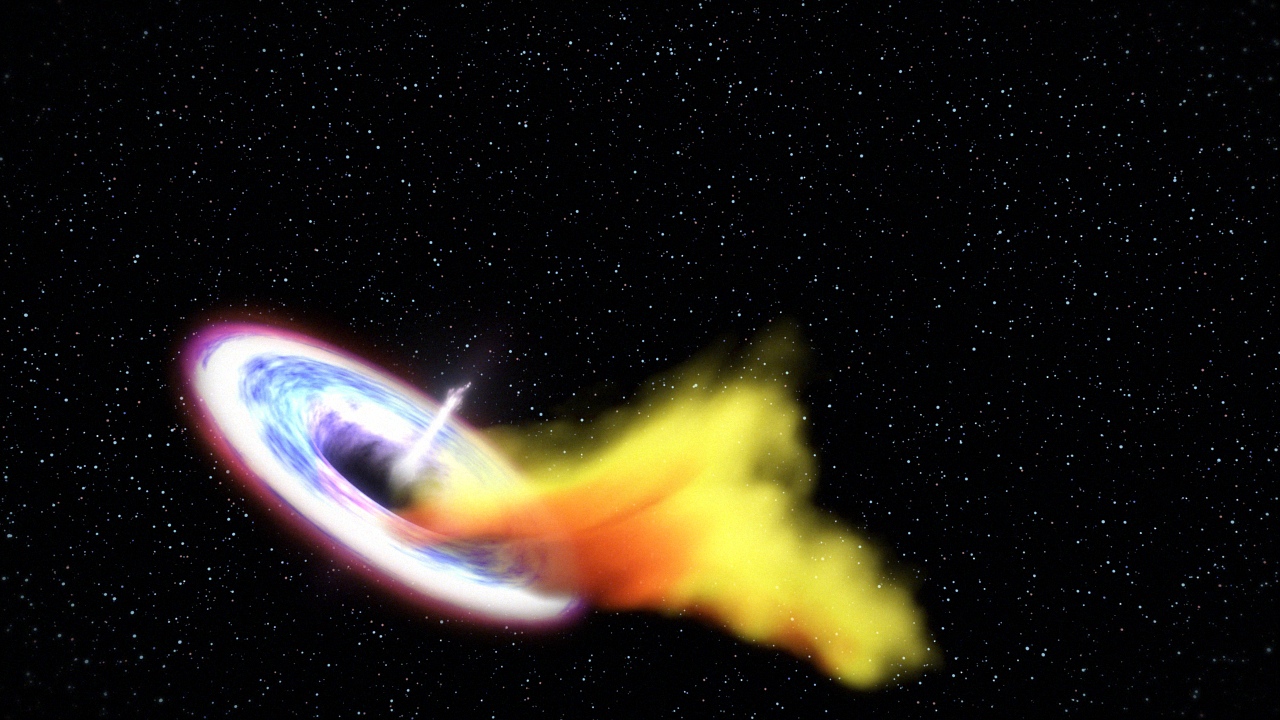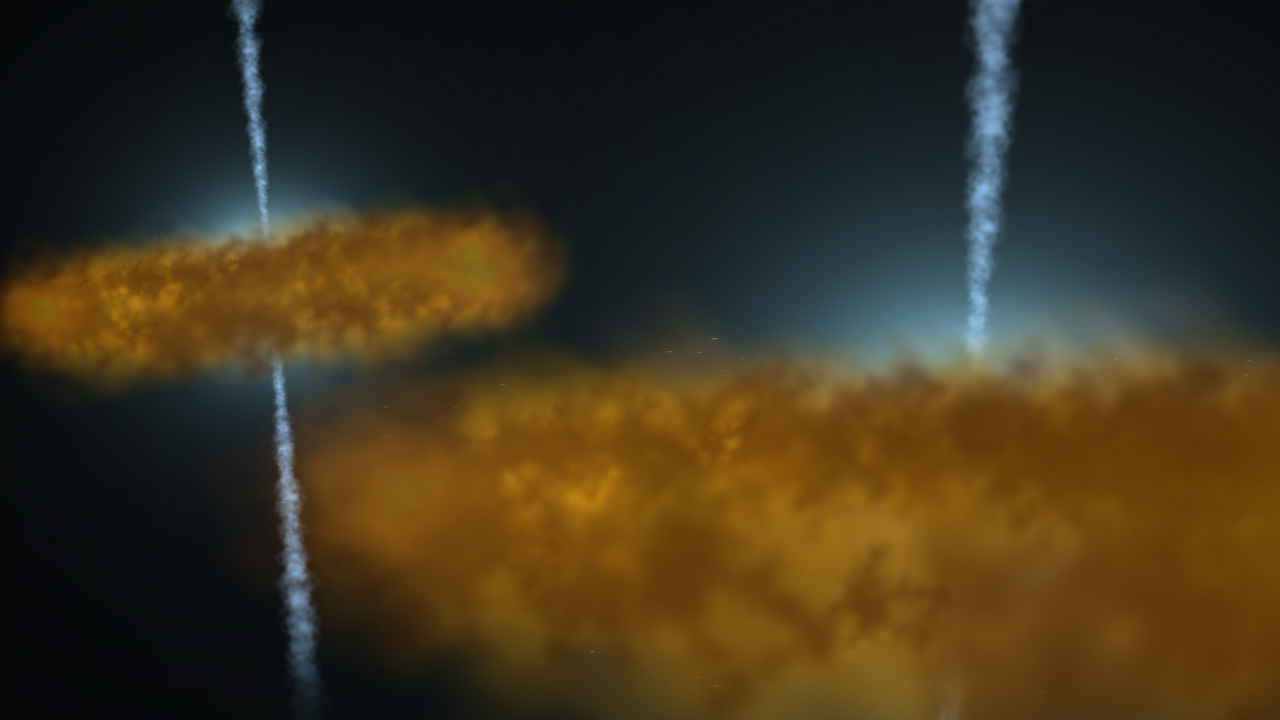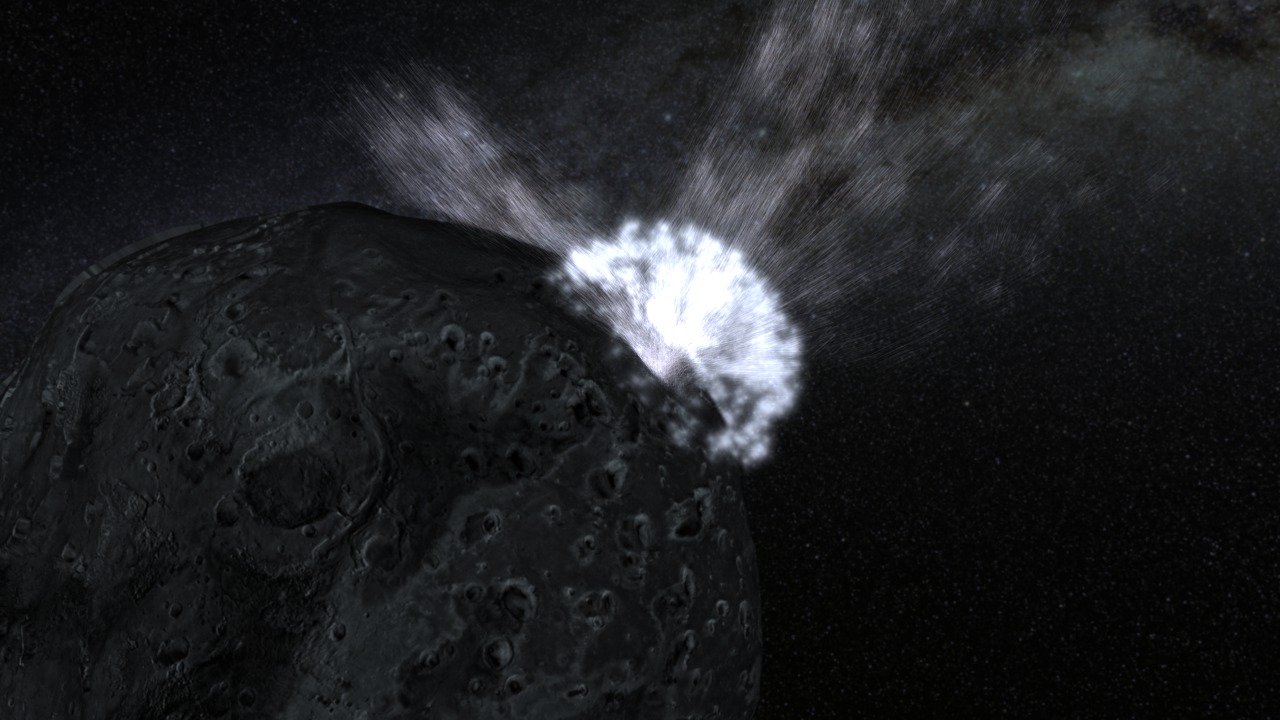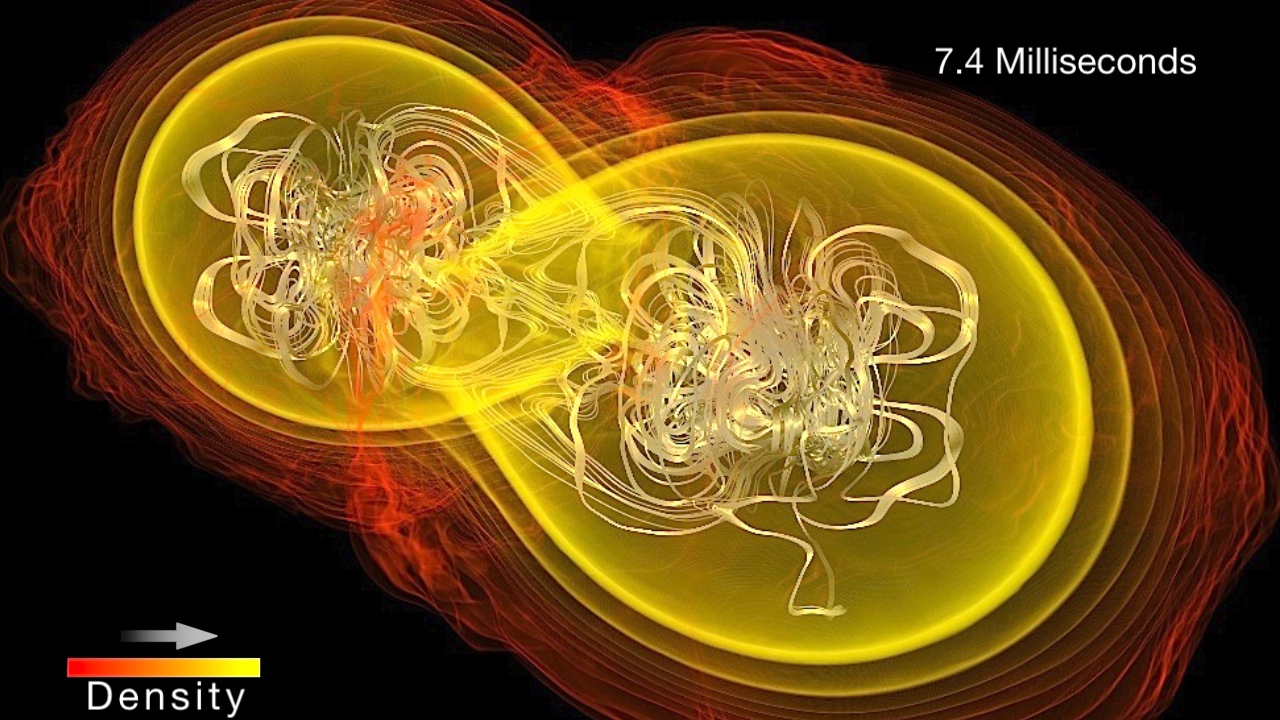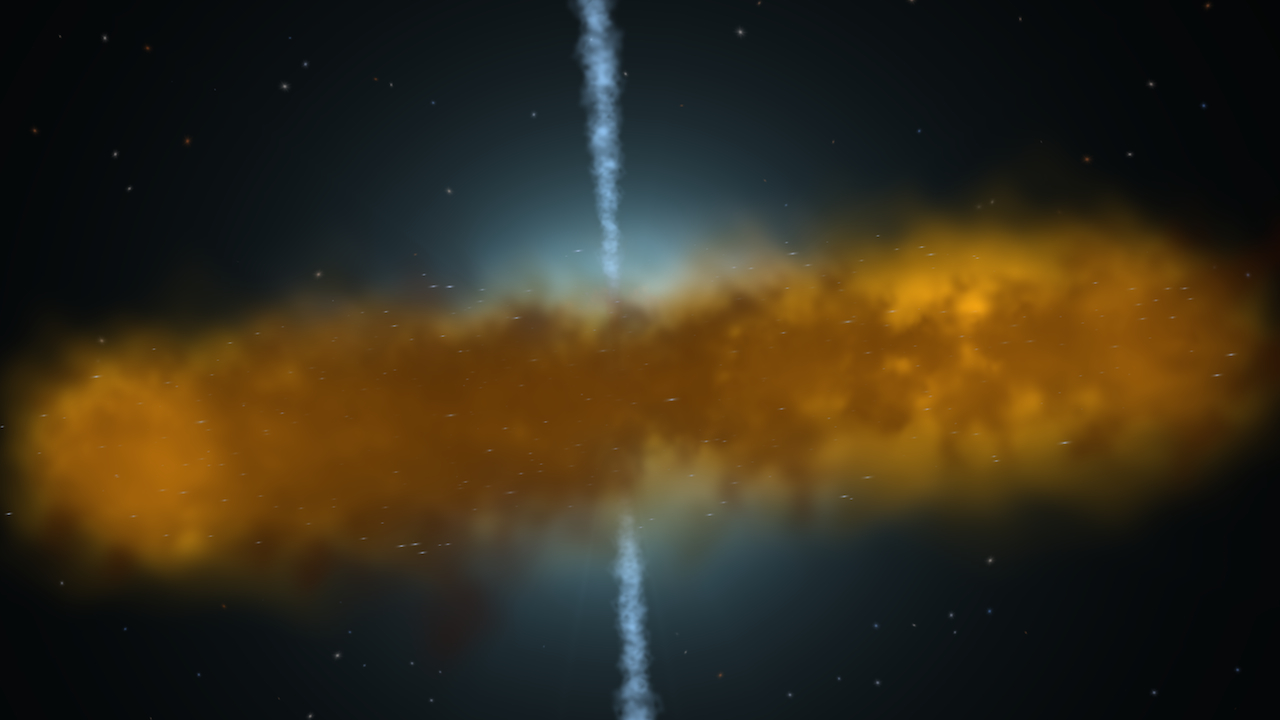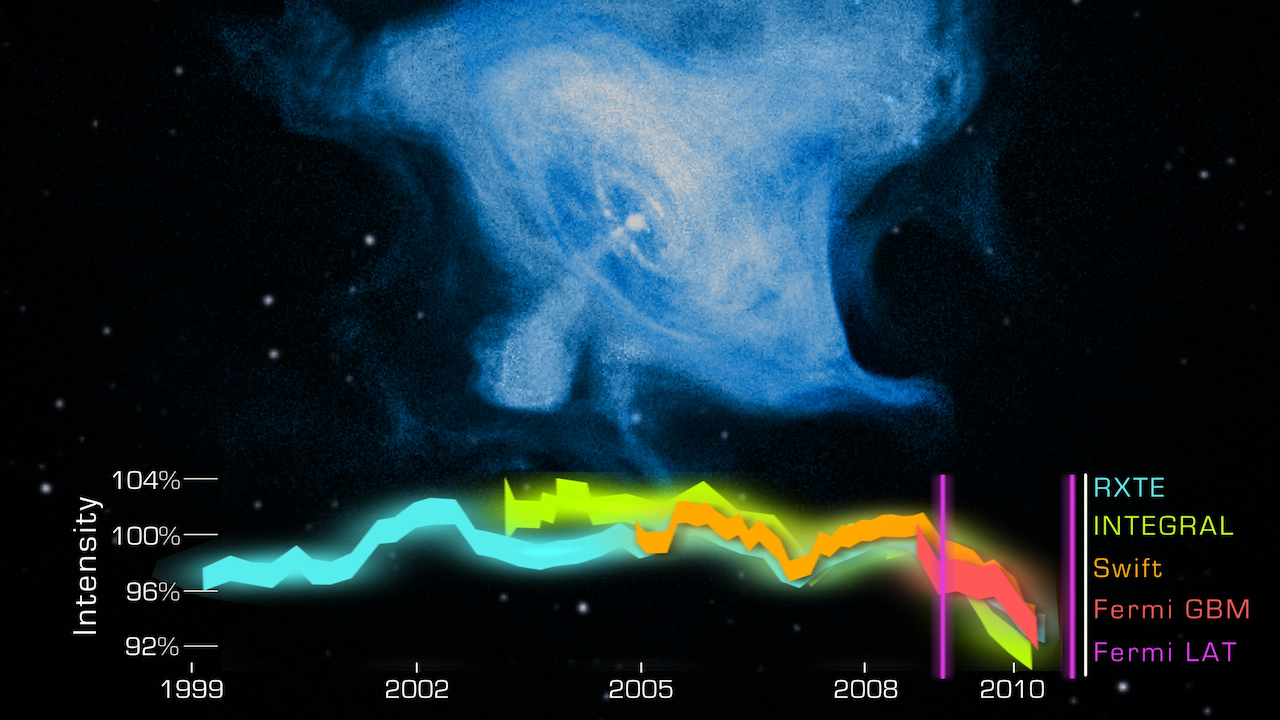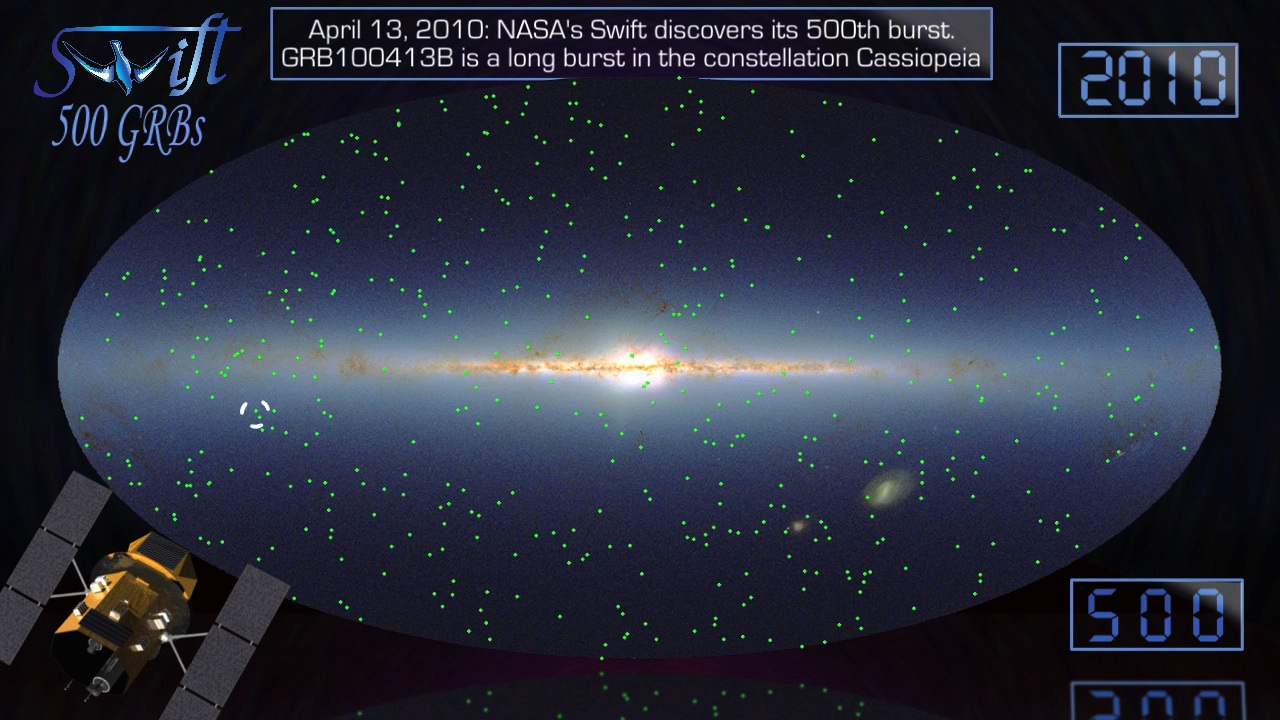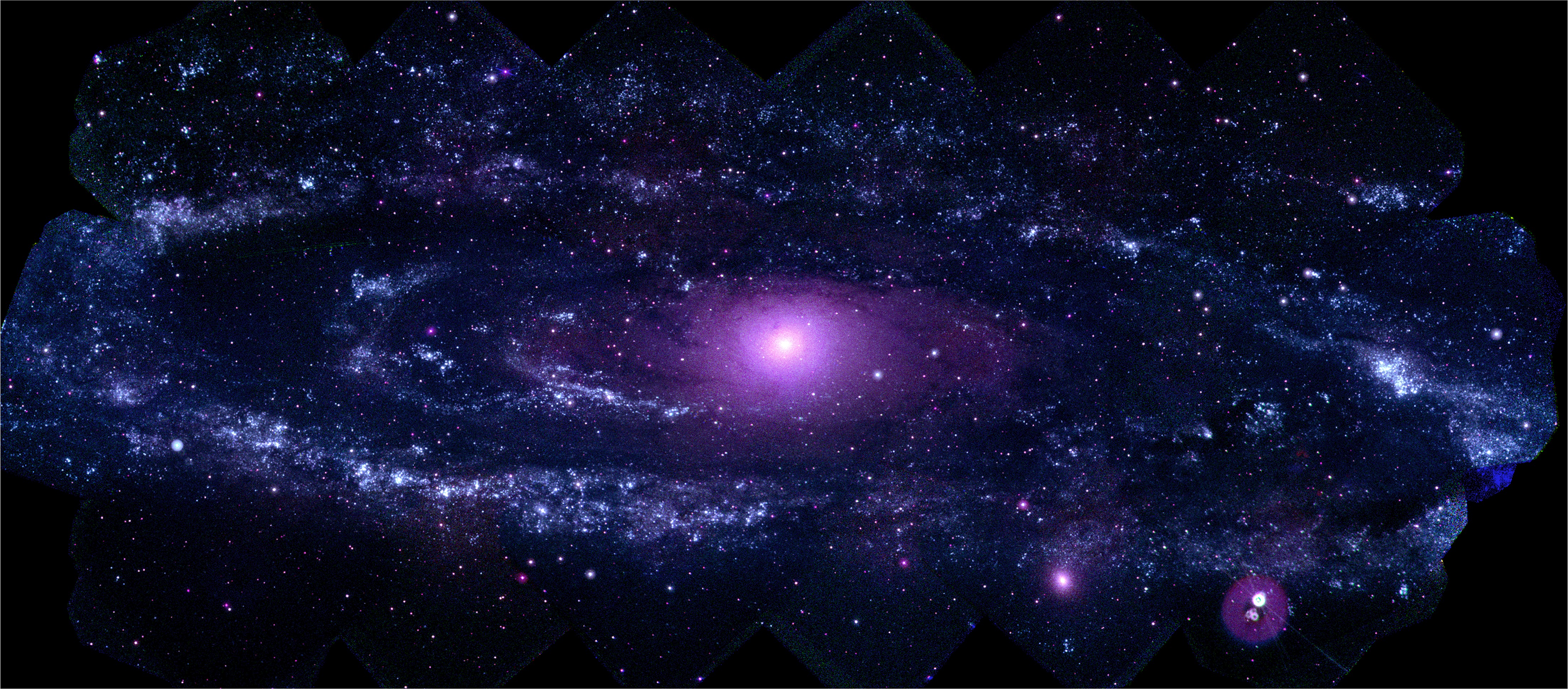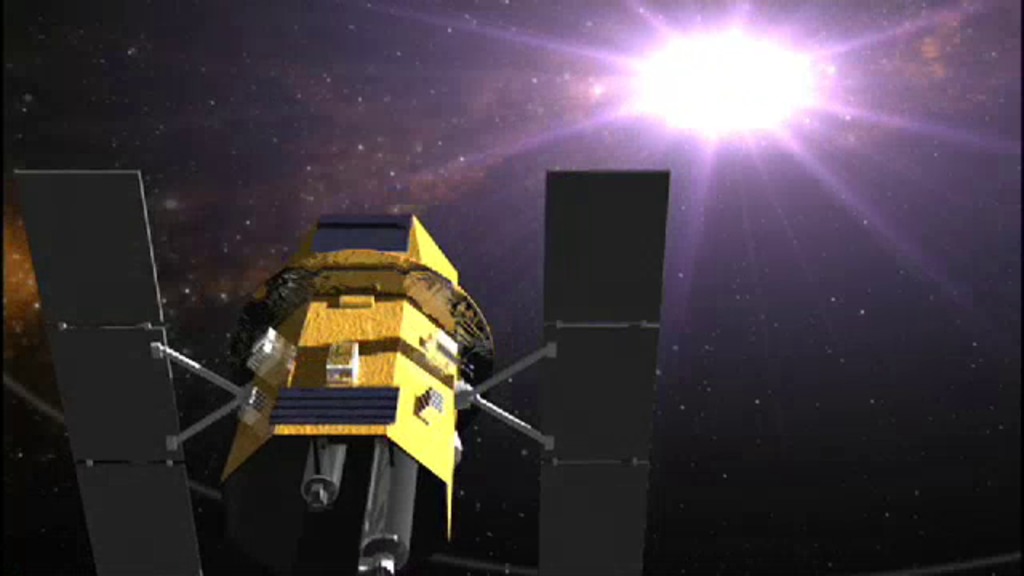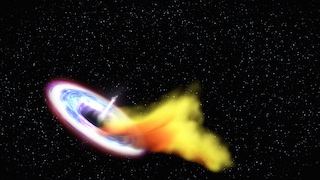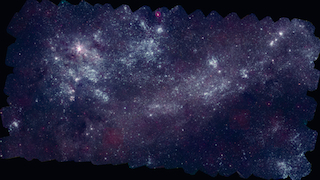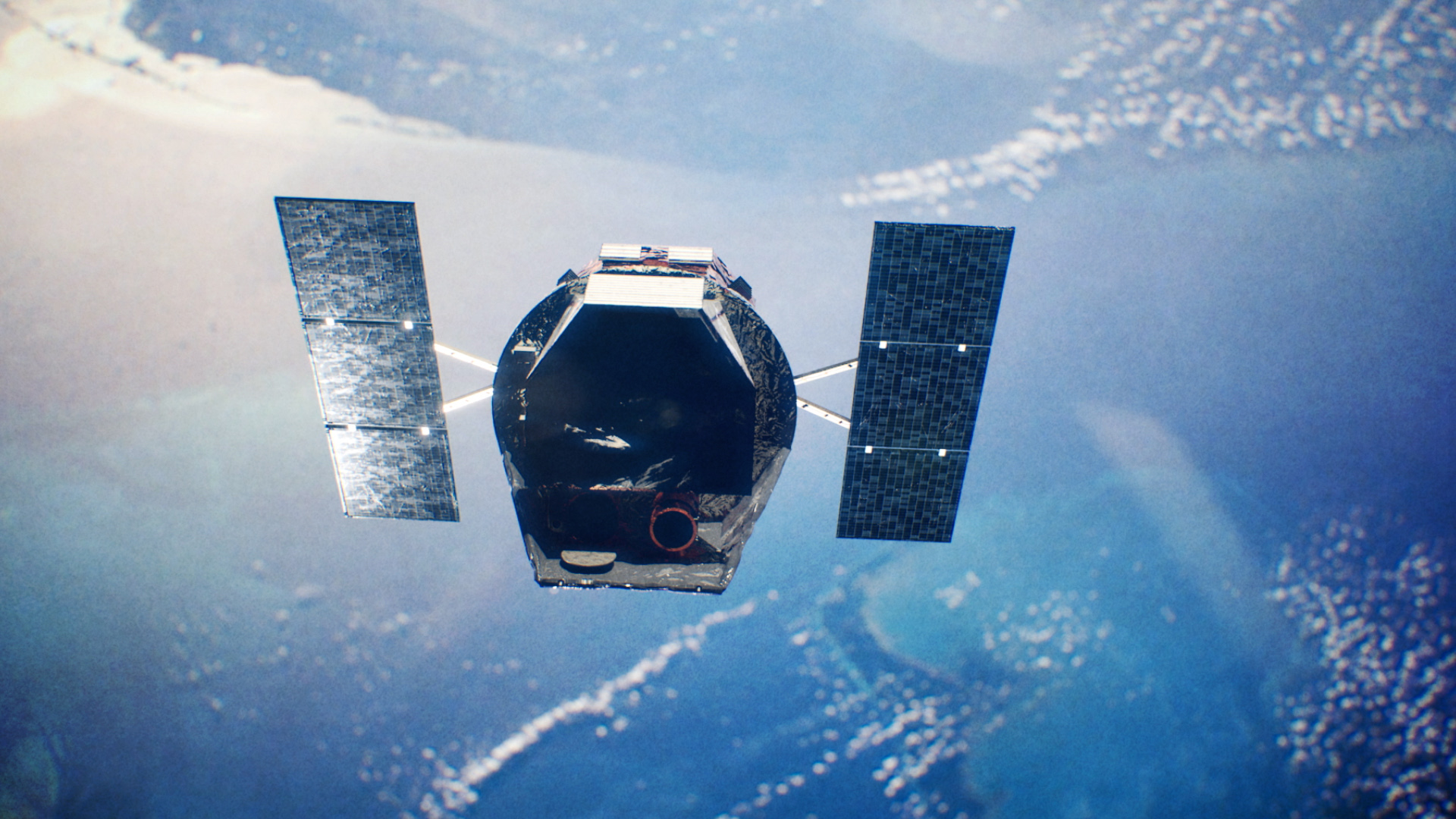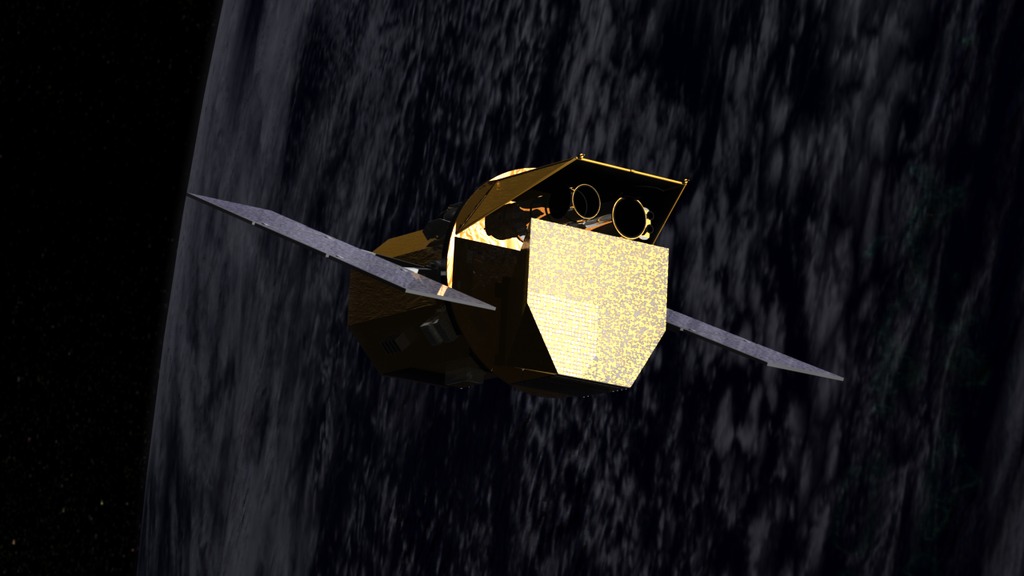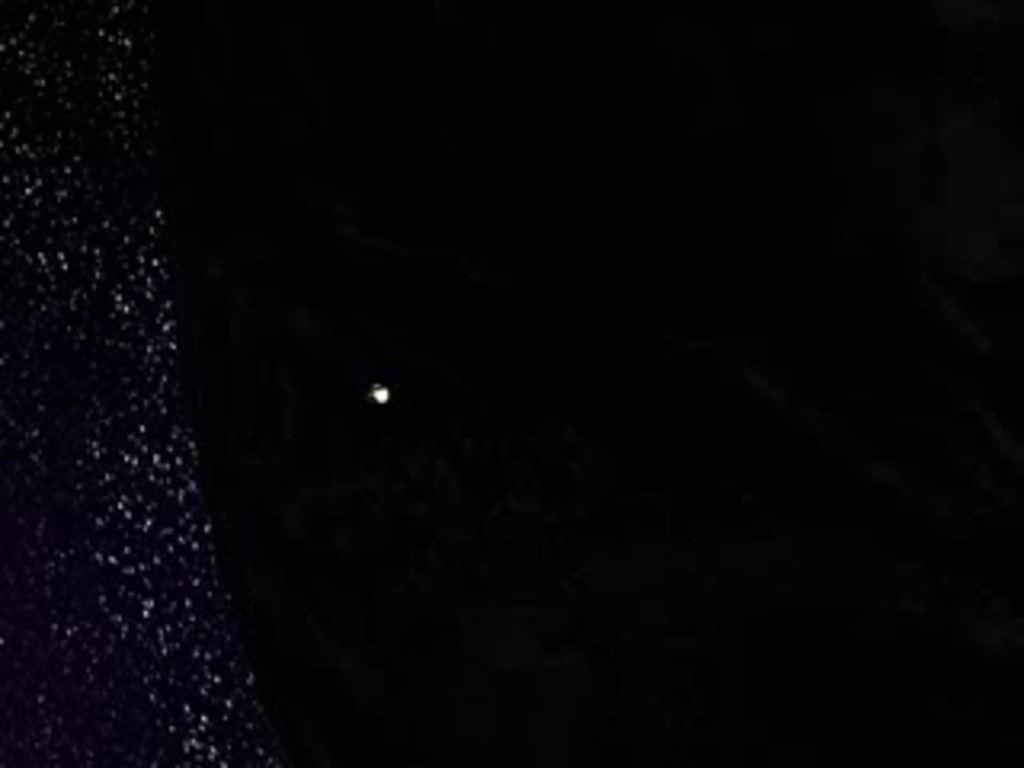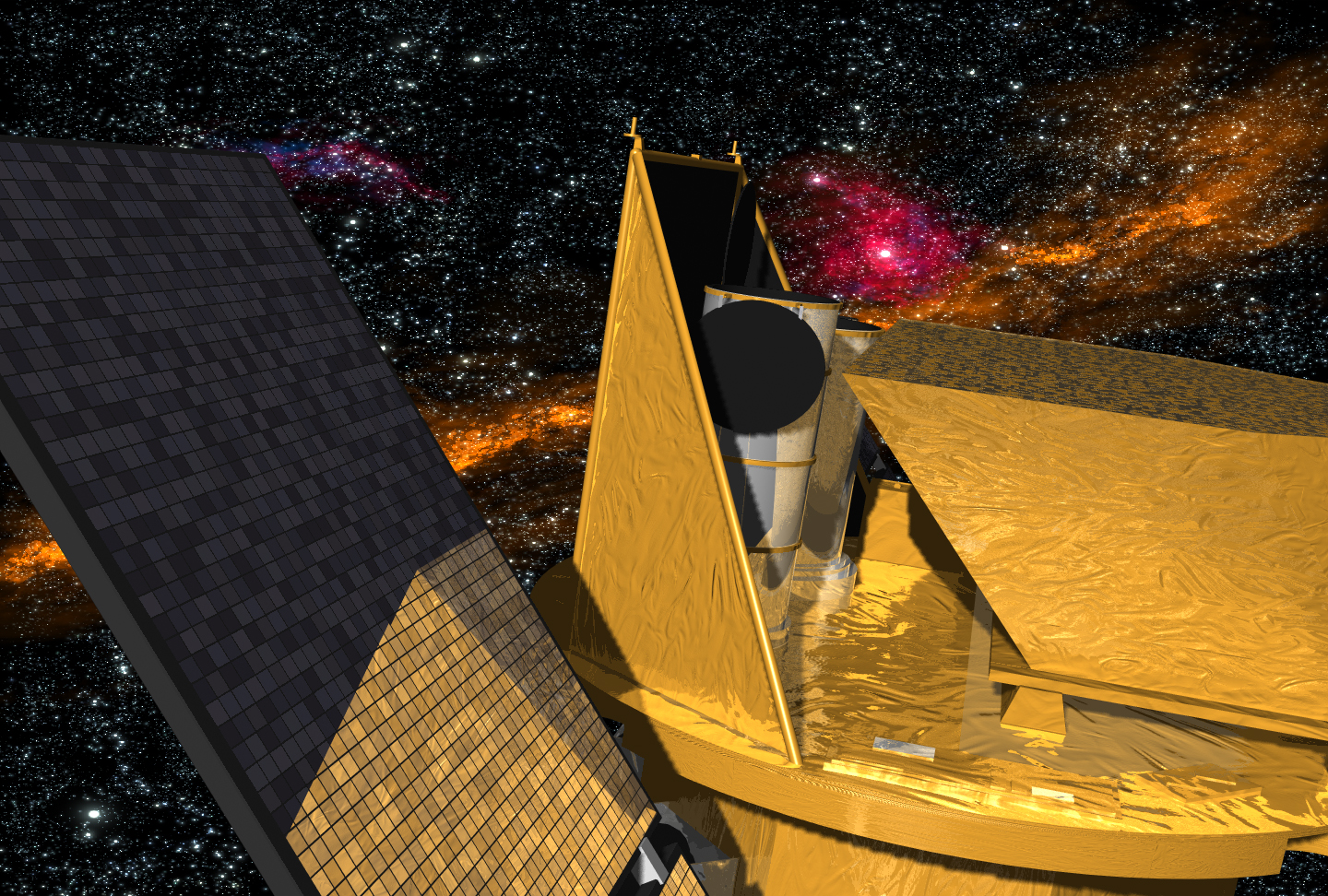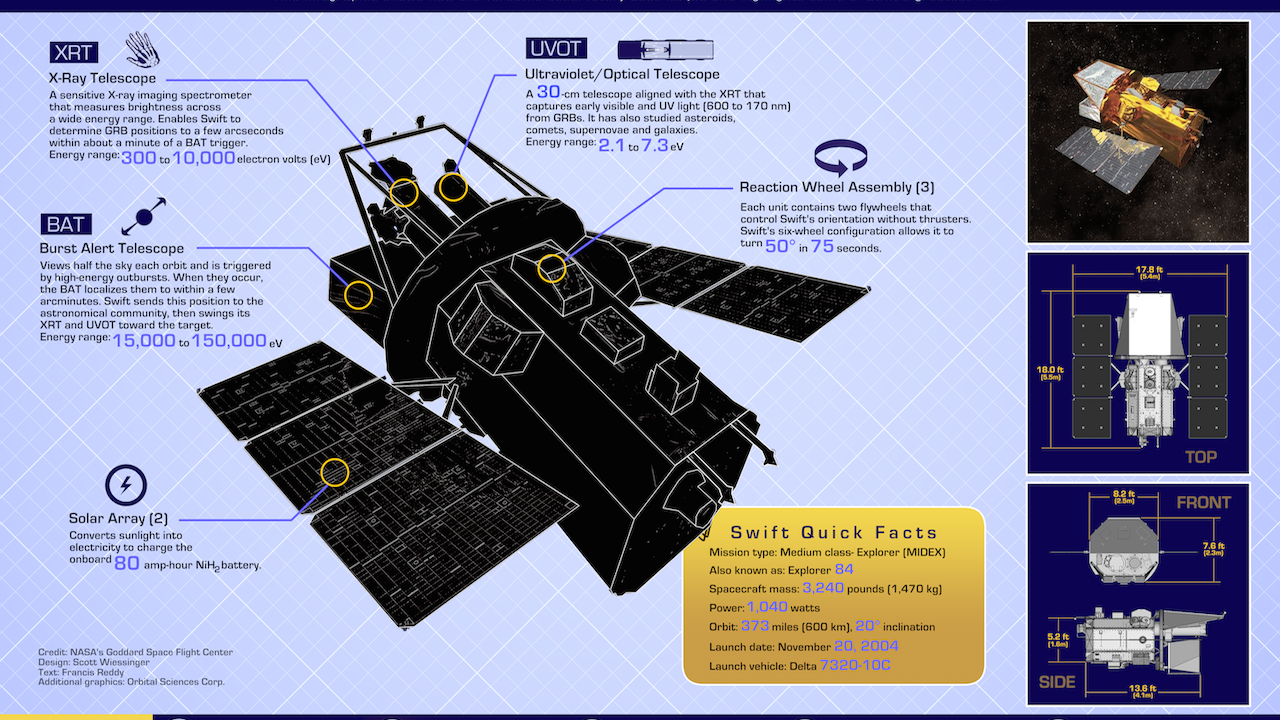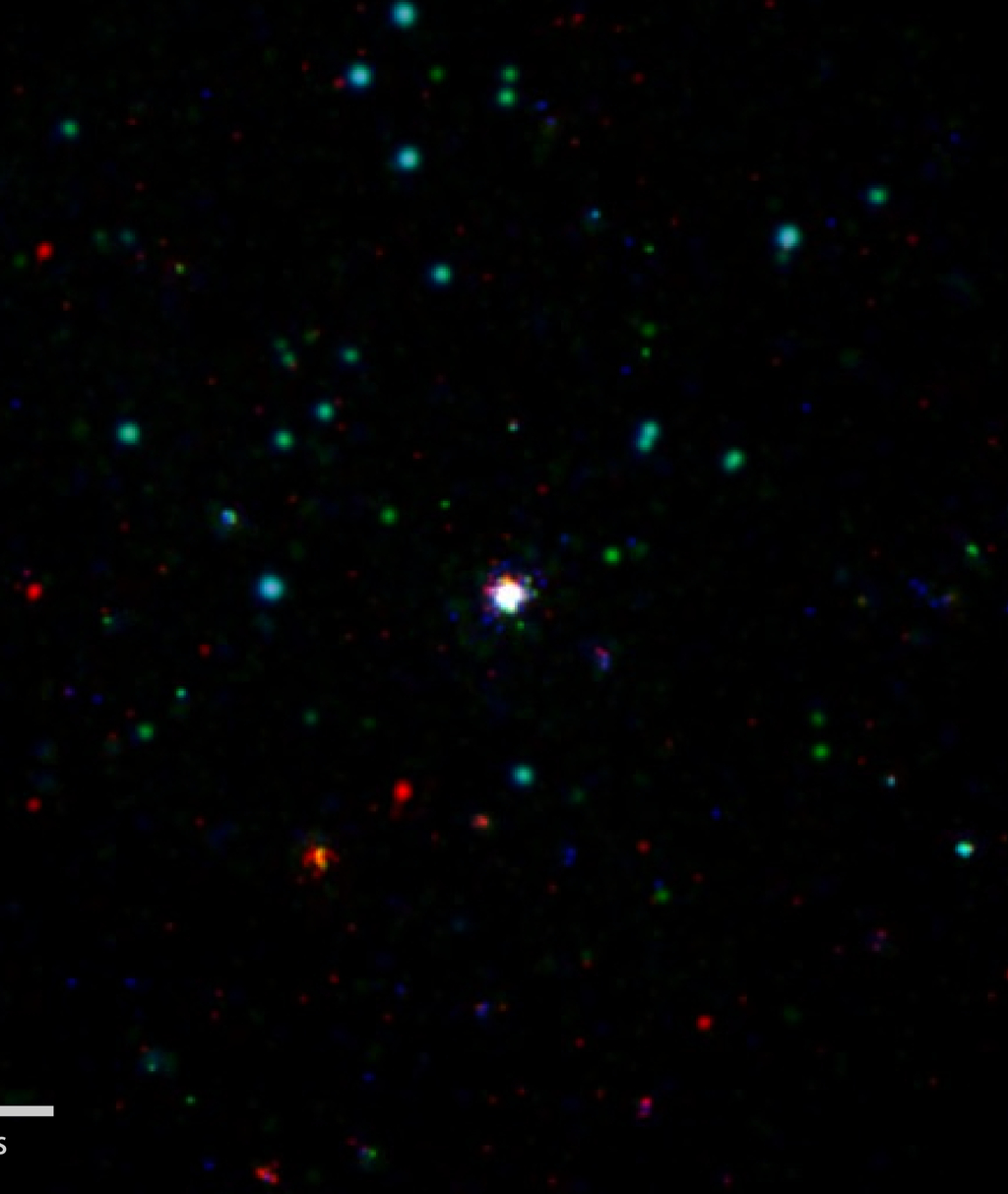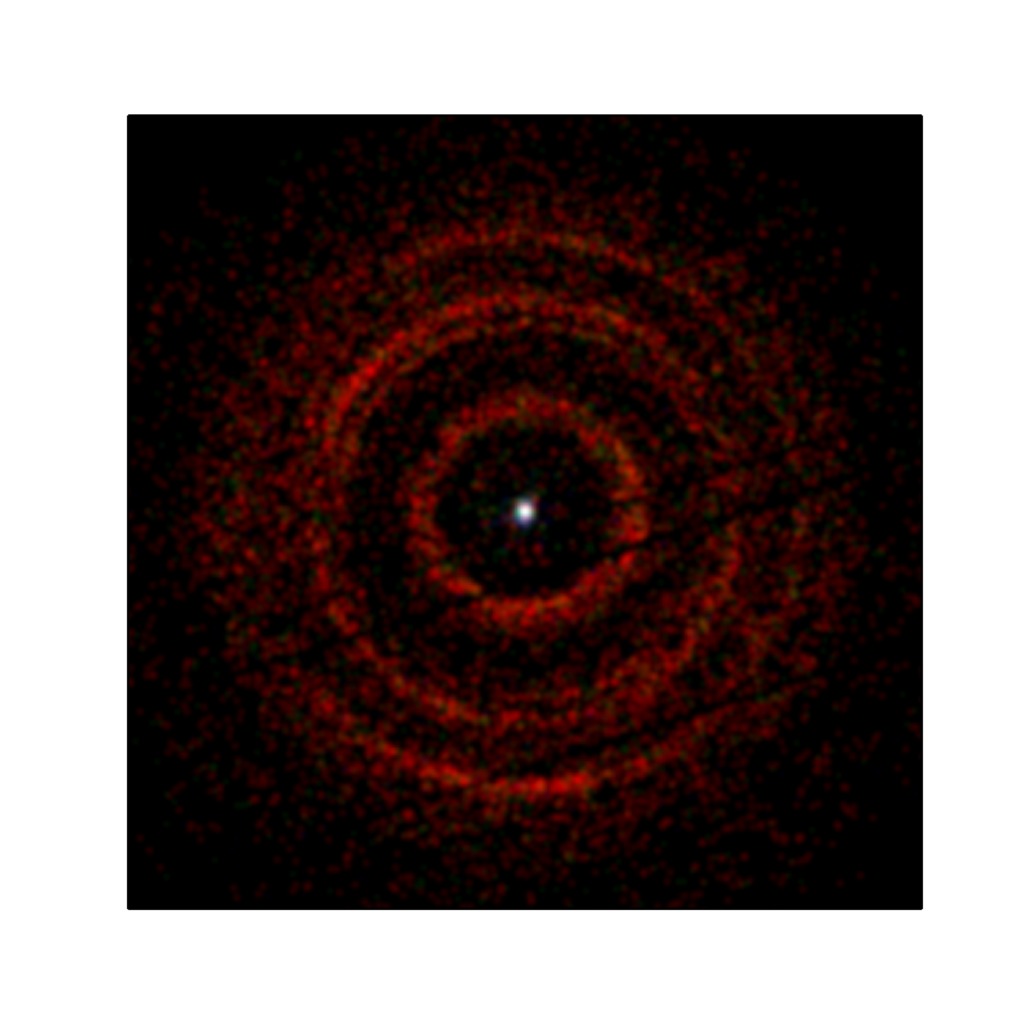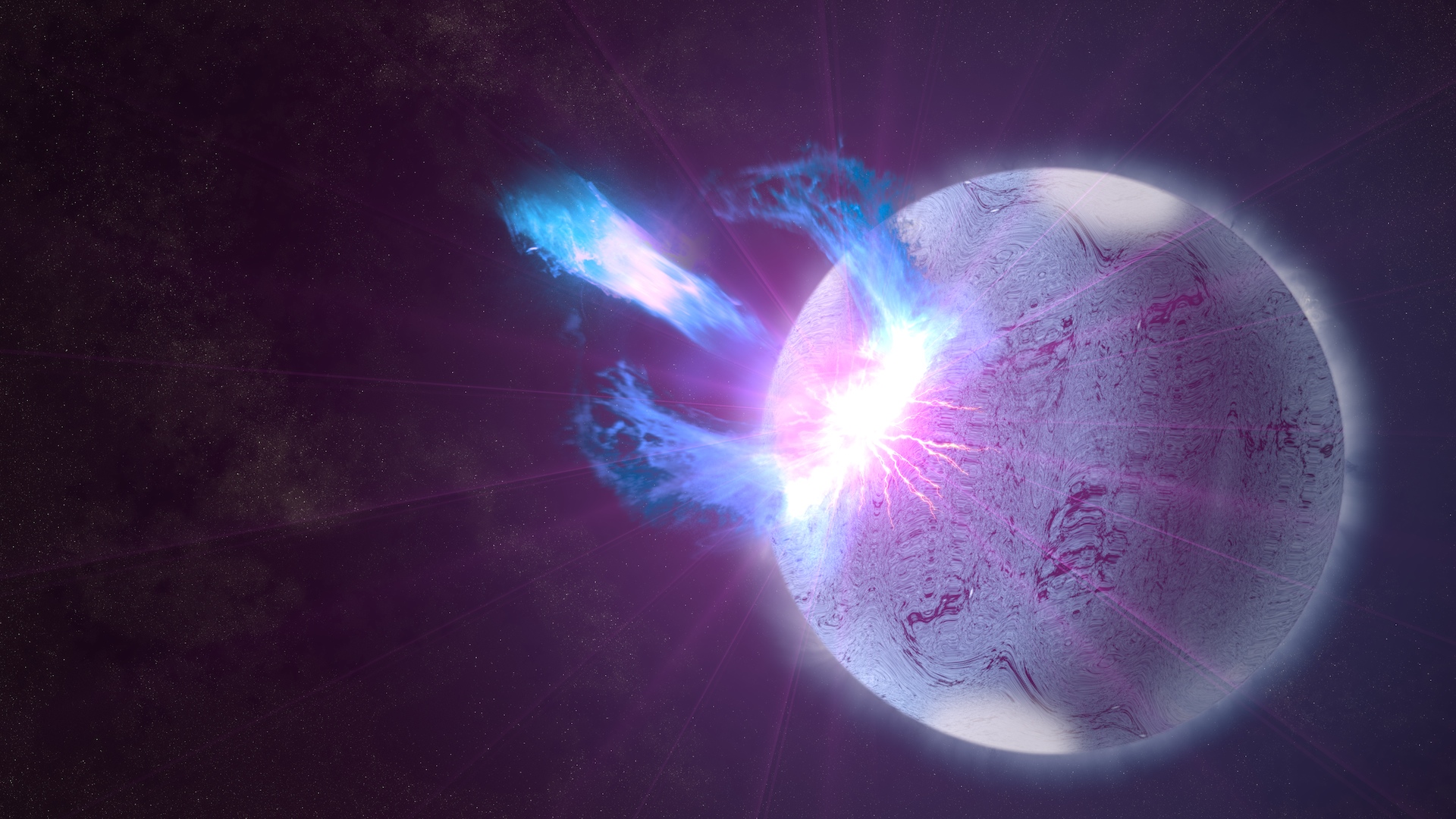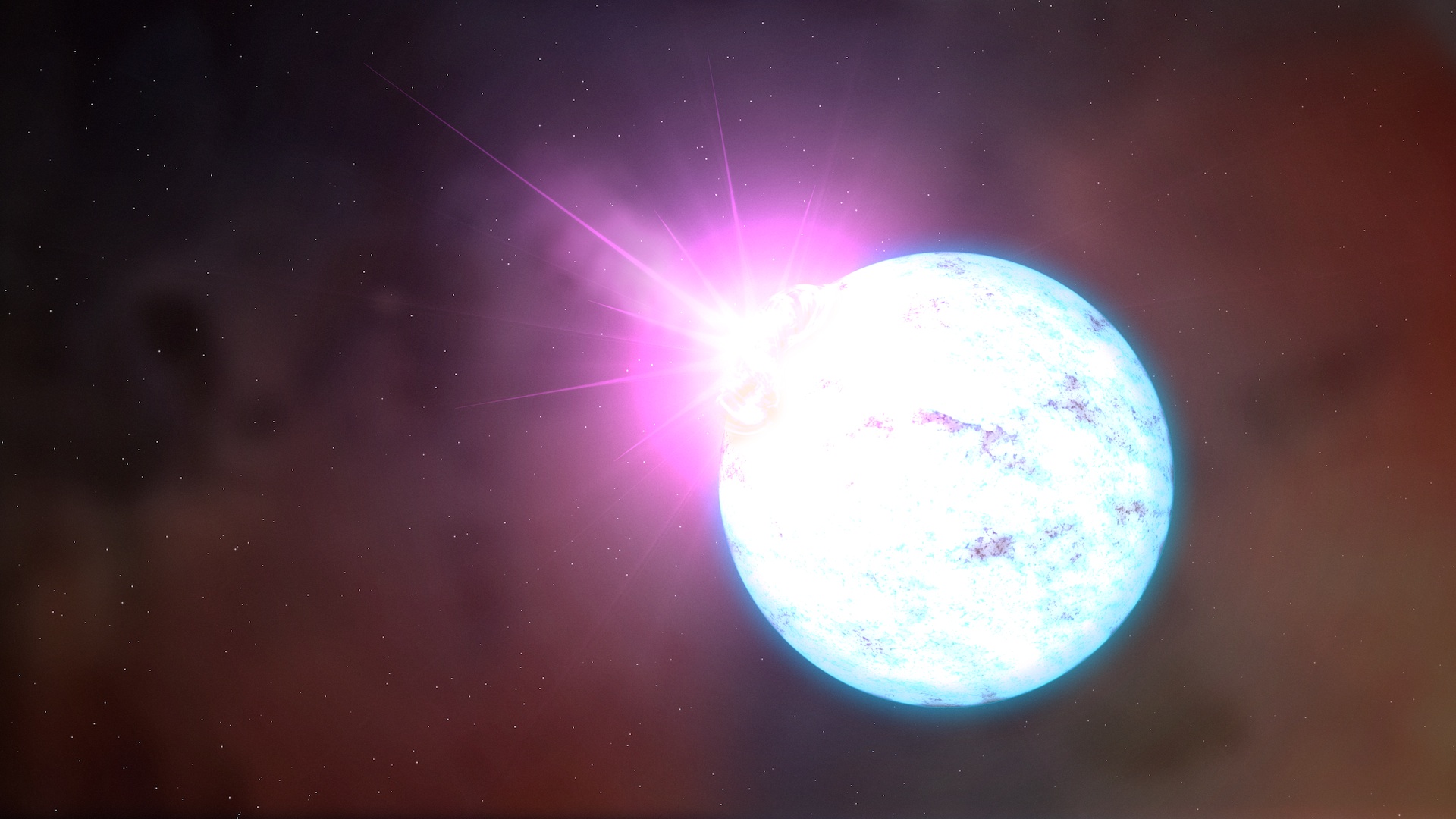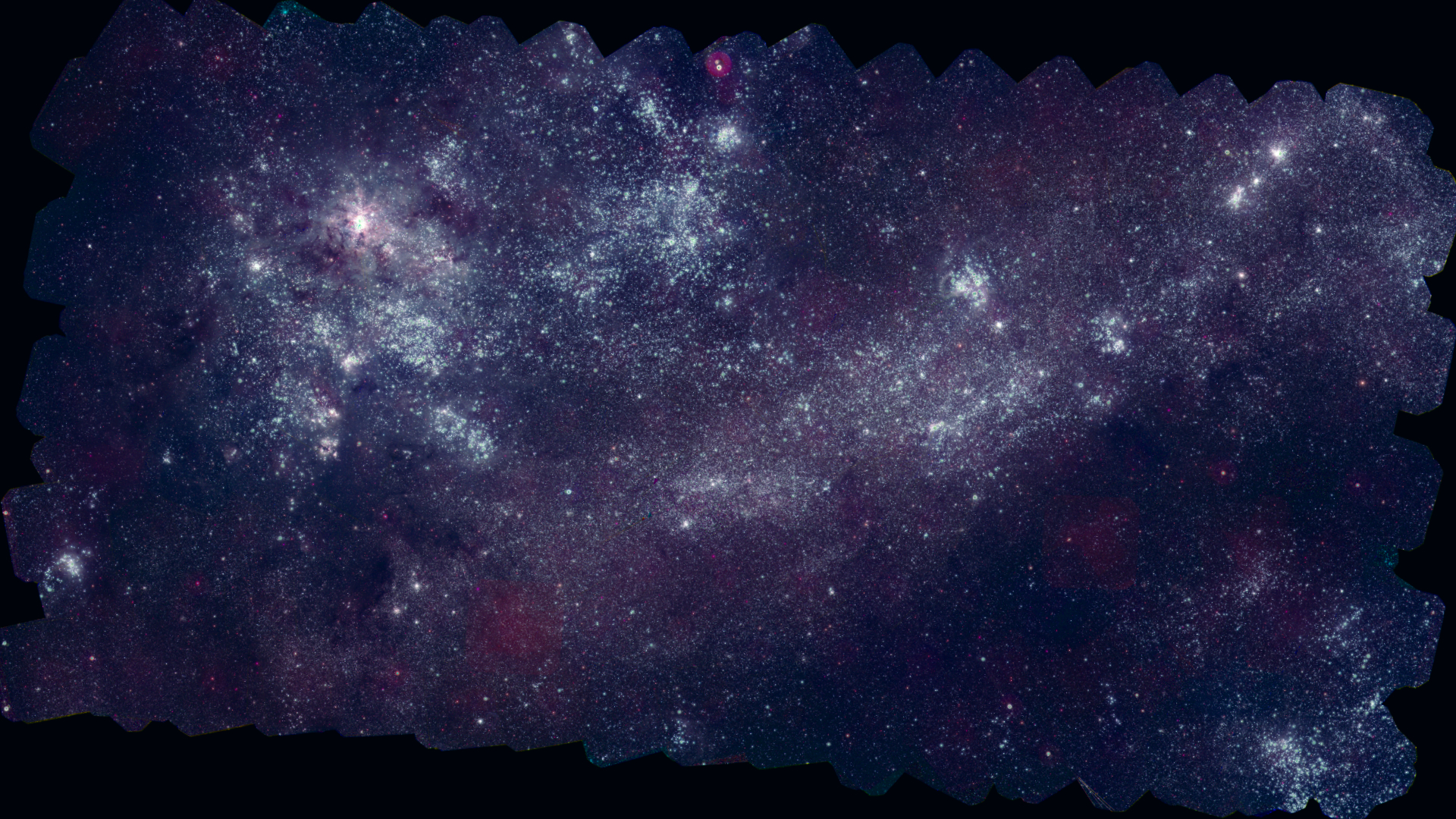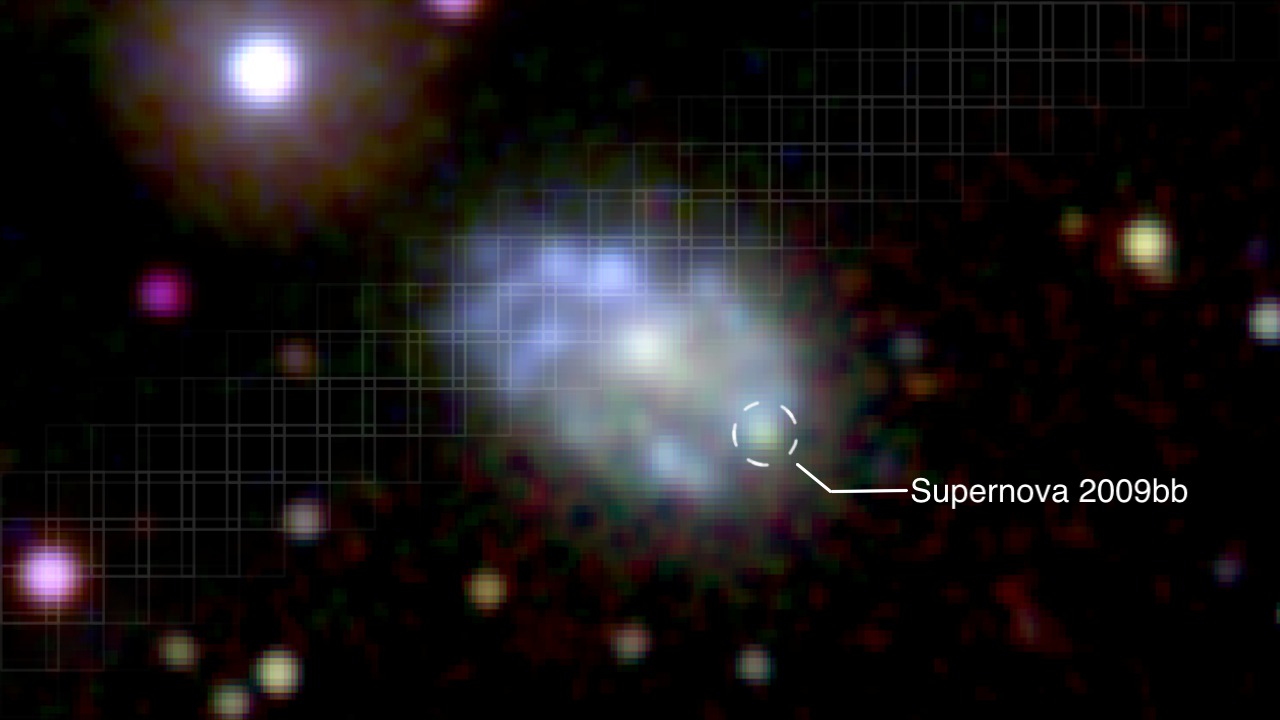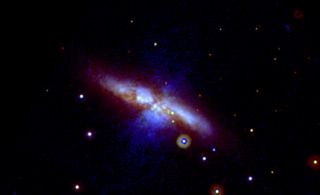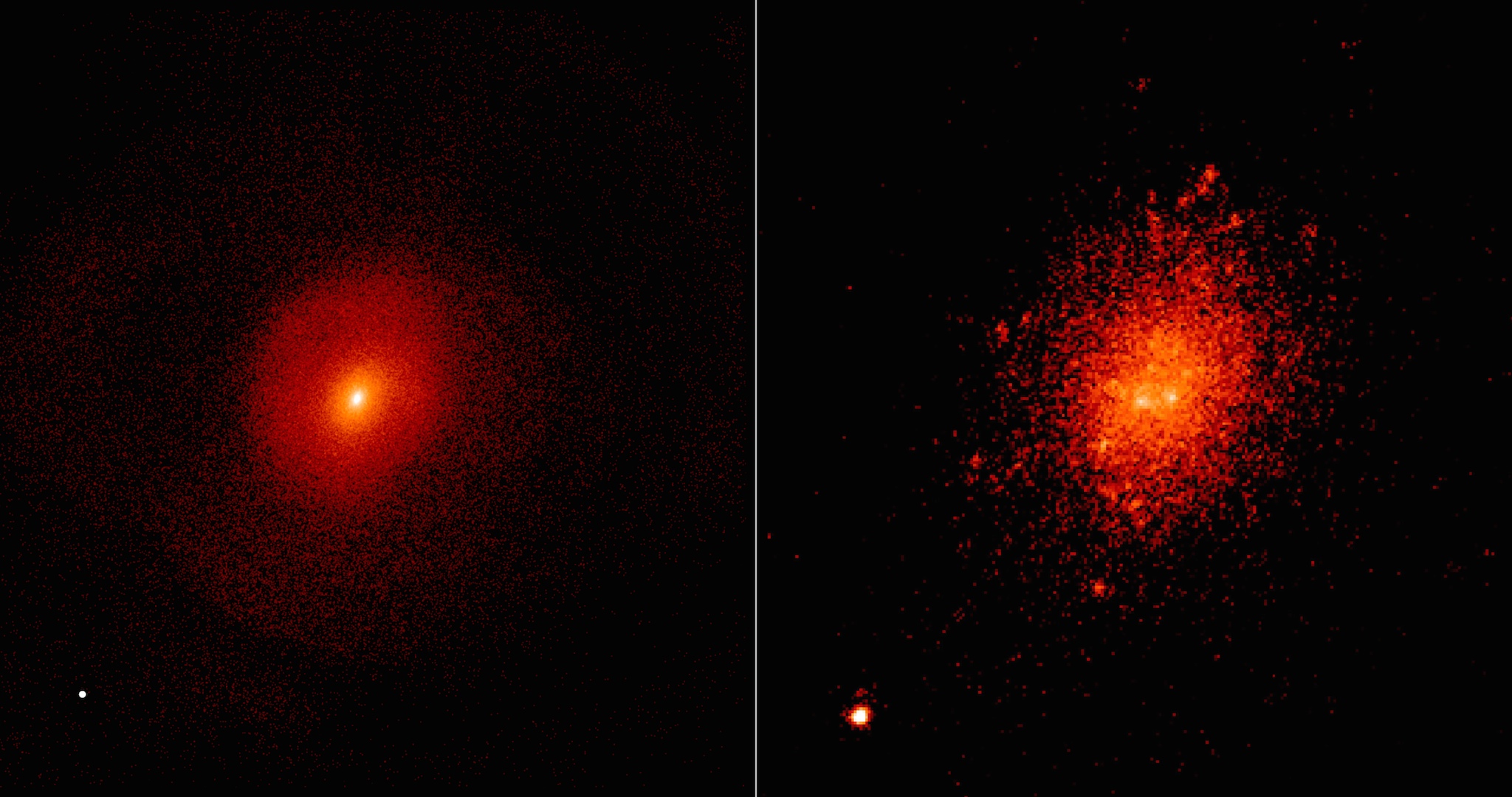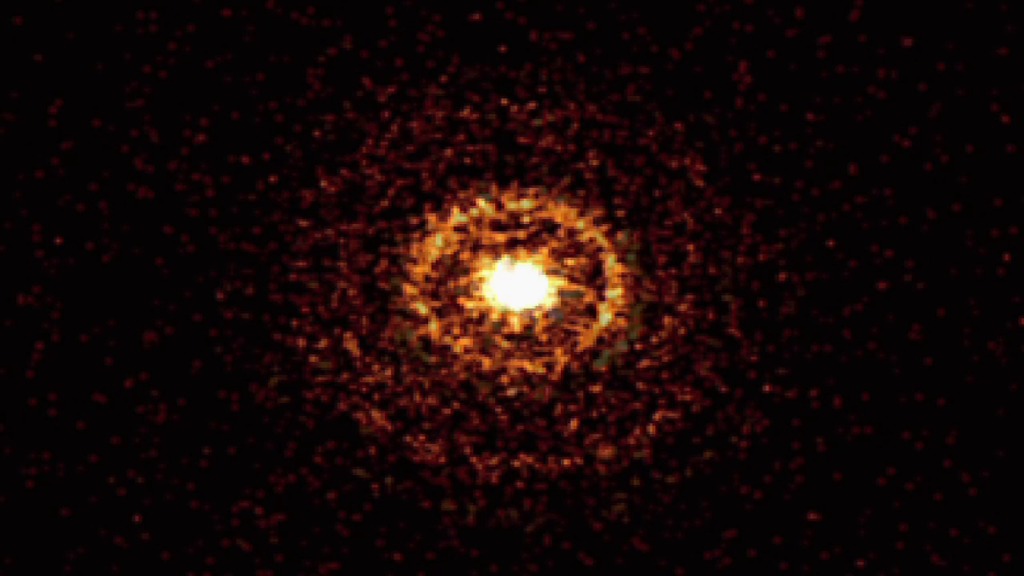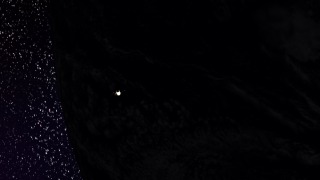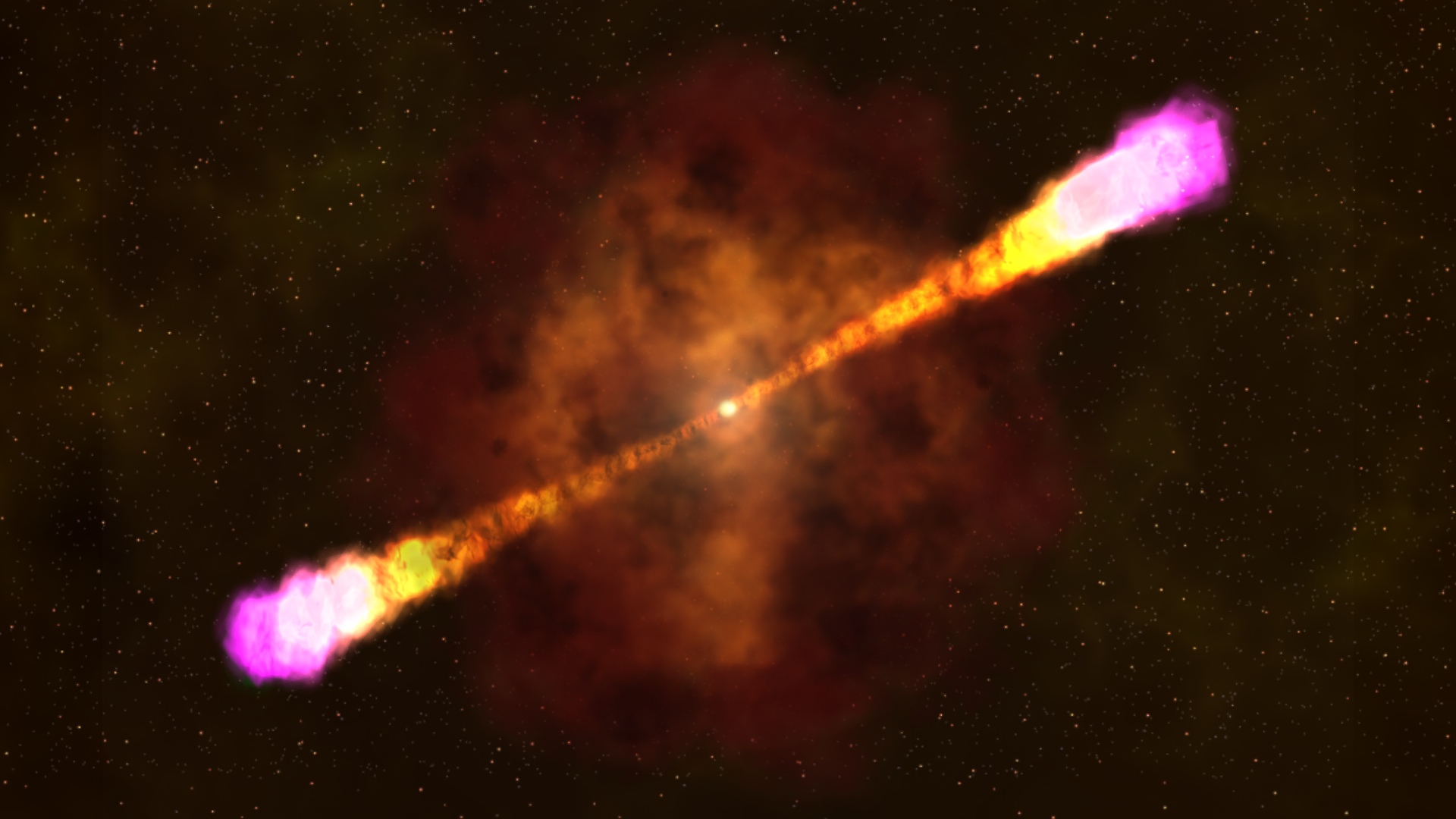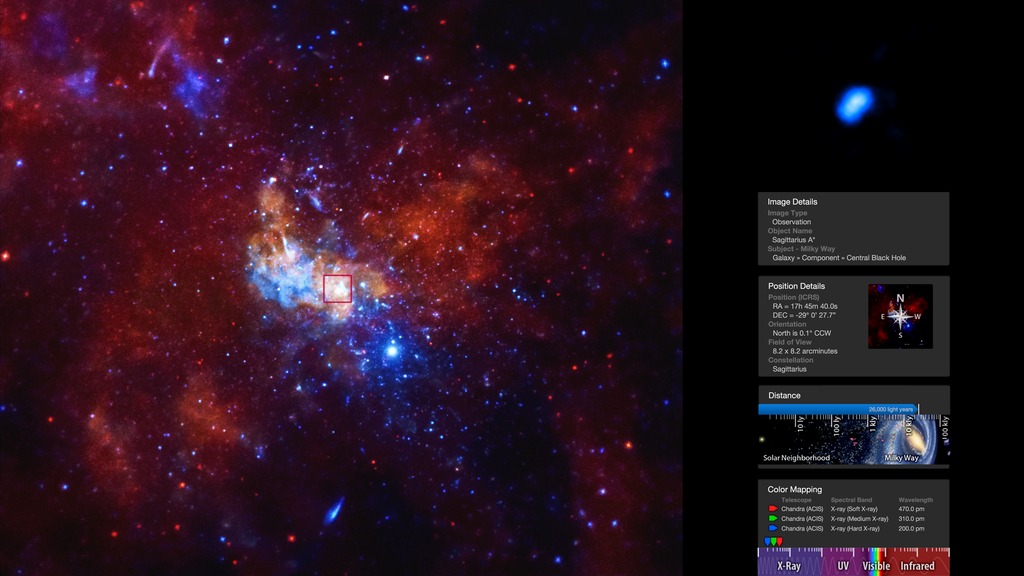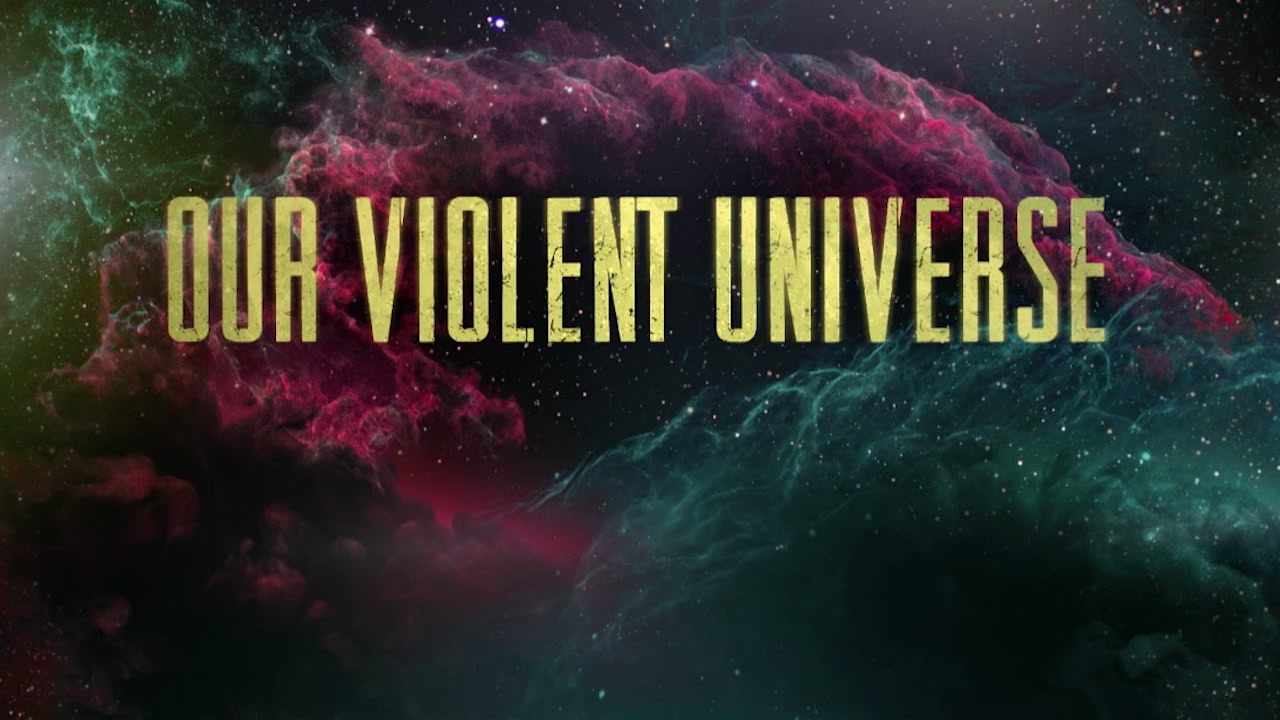Neil Gehrels Swift Observatory
Overview
NASA's Neil Gehrels Swift Observatory provides astronomers with a unique tool for exploring many different classes of astronomical phenomena, from gamma-ray bursts and supernovae to spinning neutron stars, outbursts from black holes, and even exoplanets, comets and asteroids. These pages gather together media products associated with Swift news releases.
For more information about the Swift mission, visit its NASA webpage.
Produced Videos
- Produced Video
- Produced Video
- Produced Video
- Produced Video
- Produced Video
- Produced Video
- Produced Video
- Produced Video
- Produced Video
- Produced Video
- Produced Video
- Produced Video
- Produced Video
- Produced Video
- Produced Video
- Produced Video
- Produced Video
- Produced Video
- Produced Video
- Produced Video
- Produced Video
- Produced Video
- Produced Video
- Produced Video
- Produced Video
- Produced Video
- Produced Video
- Produced Video
- Produced Video
- Produced Video
Science Topics
Spacecraft
Swift Spacecraft Animation
Go to this pageNASA’s Neil Gehrels Swift Observatory, shown in this illustration, launched into Earth orbit in November 2004. The satellite investigates gamma-ray bursts, the most energetic explosions in the universe. Swift observes the sky in visible, ultraviolet, X-ray, and gamma-ray light. Its name reflects its ability to rapidly follow up on interesting objects in the sky. Swift also studies supernova explosions, star-shredding black holes in other galaxies, comets, stellar remnants called neutron stars, and other cosmic phenomena. In 2018, NASA renamed Swift in honor of the late Neil Gehrels, who helped develop the mission and served as its principal investigator for 13 years.Credit: NASA’s Goddard Space Flight Center/Chris Smith (KBRwyle) || swift_spacecraft_update_still.jpg (1920x1080) [769.2 KB] || swift_spacecraft_update_still_print.jpg (1024x576) [328.5 KB] || swift_spacecraft_update_still_searchweb.png (320x180) [94.8 KB] || swift_spacecraft_update_still_web.png (320x180) [94.8 KB] || swift_spacecraft_update_still_thm.png (80x40) [6.5 KB] || swift_spacecraft_update_HQ.mp4 (1920x1080) [47.7 MB] || swift_spacecraft_update_LQ.mp4 (1920x1080) [24.7 MB] || swift_spacecraft_update_prores.mov (1920x1080) [255.2 MB] || swift_spacecraft_update_HQ.webm (1920x1080) [2.2 MB] ||
Swift Spacecraft Animations
Go to this pageSwift searches for Gamma Ray Bursts and stellar explosions ||
Swift - Print Still Images - Wallpaper
Go to this pageFrom the animation series - a few high resolution JPEG images || print1 || SwiftPrint1.jpg (1440x972) [1.6 MB] || SwiftPrint1_web.png (320x216) [381.5 KB] || SwiftPrint1_thm.png (80x40) [32.8 KB] || SwiftPrint1_searchweb.png (320x180) [128.5 KB] || print2 || SwiftPrint2.jpg (1440x972) [1.3 MB] || SwiftPrint2_web.png (320x216) [327.0 KB] || print3 || SwiftPrint3.jpg (1440x972) [1.8 MB] || SwiftPrint3_web.png (320x216) [381.8 KB] ||
Infographic: NASA's Neil Gehrels Swift Observatory
Go to this pageThis infographic summarizes key aspects of NASA's Swift mission, from its instruments to scientific results gleaned from 20 years of operations. Swift is still going strong, and the observatory remains a key part of NASA’s strategy to monitor the changing sky with multiple telescopes using different approaches for studying the cosmos.Credit: NASA's Goddard Space Flight CenterClick the download button to select from a range of sizes. || Swift_20_Infographic_Quarter.jpg (1550x1991) [1.2 MB] || Swfit_20_Poster_CMYK.jpg (6200x7965) [19.2 MB] || Swift_20_Infographic_Full.jpg (6200x7965) [7.4 MB] || Swift_20_Infographic_Full.png (6200x7965) [34.2 MB] || Swift_20_Infographic_Half.jpg (3100x3983) [3.2 MB] || Swift_20_Infographic_Half.png (3100x3983) [10.5 MB] || Swift_20_Infographic_Full.jpg.dzi [178 bytes] || Swift_20_Infographic_Full.jpg_files [4.0 KB] ||
Still Images and Graphics
- Produced Video
- Produced Video
- Produced Video
- Produced Video
- Produced Video
- Produced Video
- Produced Video
- Produced Video
- Produced Video
- Produced Video
- Produced Video
- Produced Video
- Produced Video
Presentation Resources
Briefing Materials: NASA Missions Explore Record-Setting Cosmic Blast
Go to this pageOn Thursday, Nov. 21, 2013, NASA held a media teleconference to discuss new findings related to a brilliant gamma-ray burst detected on April 27. Audio of the teleconference is available for download here.Related feature story: www.nasa.gov/content/goddard/nasa-sees-watershed-cosmic-blast-in-unique-detail/.Audio of Sylvia Zhu interview for a Science Podcast. Briefing Speakers Introduction: Paul Hertz, NASA Astrophysics Division Director, NASA Headquarters, Washington, D.C.Charles Dermer, astrophysicist, Naval Research Laboratory, Washington, D.C.Thomas Vestrand, astrophysicist, Los Alamos National Laboratory, Los Alamos, N.M.Chryssa Kouveliotou, astrophysicist, NASA’s Marshall Space Flight Center, Huntsville, Ala. Presenter 1: Charles Dermer ||
X-ray Telescopes Find Black Hole May Be a Neutrino Factory
Go to this pageA Chandra X-ray telescope image of Sagittarius-A || chandra_sagittarius_a_20150105_print.jpg (1024x576) [116.5 KB] || chandra_sagittarius_a_20150105_searchweb.png (320x180) [74.8 KB] || chandra_sagittarius_a_20150105_web.png (320x180) [74.8 KB] || chandra_sagittarius_a_20150105_thm.png (80x40) [5.7 KB] || chandra_sagittarius_a_20150105_1080p.mp4 (1920x1080) [636.7 KB] || chandra_sagittarius_a_20150105_720p.webm (1280x720) [290.3 KB] || chandra_sagittarius_a_20150105_720p.mp4 (1280x720) [319.4 KB] || chandra_sagittarius_a_20150105_2160p.mp4 (3840x2160) [1.8 MB] || chandra_sagittarius_a_20150105_360p.mp4 (640x360) [94.2 KB] || chandra_sagittarius_a_20150105.tif (3840x2160) [7.3 MB] ||
Mysterious ‘Cow’ Blast Studied with NASA Telescopes
Go to this pageWatch what scientists think happens when a black hole tears apart a hot, dense white dwarf star. A team working with observations from NASA’s Neil Gehrels Swift Observatory suggest this process explains a mysterious outburst known as AT2018cow. Credit: NASA's Goddard Space Flight CenterMusic: "Curious Events" from Killer TracksWatch this video on the JPL YouTube channel.Complete transcript available. || AT2018COW_Labeled_Still_3_print.jpg (1024x576) [66.0 KB] || AT2018COW_Labeled_Still_3.jpg (3840x2160) [494.0 KB] || AT2018COW_Labeled_Still_3_searchweb.png (320x180) [56.8 KB] || AT2018COW_Labeled_Still_3_thm.png (80x40) [5.5 KB] || AT2018COW_Labeled_Music_Intro_3_1080.mp4 (1920x1080) [116.5 MB] || AT2018COW_Labeled_Music_Intro_3_1080p.mov (1920x1080) [161.2 MB] || AT2018COW_Labeled_Music_Intro_3_1080.webm (1920x1080) [13.2 MB] || AT2018COW_Labeled_Music_Intro_3_ProRes_3840x2160.mov (3840x2160) [4.7 GB] || AT2018COW_Labeled_Music_Intro_3_4k.mp4 (3840x2160) [436.5 MB] || AT2018COW_Labeled_Music_Intro_3_4K.mov (3840x2160) [241.6 MB] || AT2018COW_SRT_Captions.en_US.srt [1.2 KB] || AT2018COW_SRT_Captions.en_US.vtt [1.3 KB] ||
Live Events
Astrophysics Live Shot 10.17.2017
Go to this pageLive shot b-rollFor more information see: NASA Missions Catch First Light From A Gravitational-Wave-Event || 014_Broll.00001_print.jpg (1024x576) [111.1 KB] || 014_Broll.00001_searchweb.png (320x180) [78.4 KB] || 014_Broll.00001_thm.png (80x40) [6.8 KB] || 014_Broll.webm (1280x720) [30.2 MB] || 014_Broll.mp4 (1280x720) [469.2 MB] || 014_Broll.mov (1280x720) [4.2 GB] || 014_Broll_2.mov (1280x720) [4.2 GB] ||
NASM 2015: Our Violent Universe
Go to this pageNASM 2015 Presentation - Our Violent Universe || poster-VX-73356-00-00-25,41.jpg (1280x720) [159.6 KB] || poster-VX-73356-00-00-25,41_searchweb.png (320x180) [94.7 KB] || poster-VX-73356-00-00-25,41_thm.png (80x40) [6.8 KB] || APPLE_TV_G2015-086_NASM_2015_appletv.m4v (1280x720) [1.6 GB] || NASA_TV_G2015-086_NASM_2015.mpeg (1280x720) [10.9 GB] || WMV_G2015-086_NASM_2015_HD.wmv (1280x720) [630.3 MB] || YOUTUBE_HQ_G2015-086_NASM_2015_youtube_hq.mov (1280x720) [8.3 GB] || G2015-086_NASM_2015_edited.mov (1280x720) [29.2 GB] || WEBM_G2015-086_NASM_2015.webm (960x540) [1.3 GB] || APPLE_TV_G2015-086_NASM_2015_appletv_subtitles.m4v (1280x720) [1.6 GB] || G2015-086_NASM2015.en_US.srt [77.0 KB] || G2015-086_NASM2015.en_US.vtt [72.4 KB] || NASA_PODCAST_G2015-086_NASM_2015_ipod_sm.mp4 (320x240) [589.1 MB] ||
![Watch to learn how NASA’s Neil Gehrels Swift Observatory got its name.
Credit: NASA’s Goddard Space Flight Center
Music: “In a Conundrum,” Pip Heywood [PRS], Universal Production Music“Spinning Particles,” Christian Telford [ASCAP] and Koichi Sanchez-Imahashi [ASCAP], Universal Production MusicWatch this video on the NASA Goddard YouTube channel.Complete transcript available.](/vis/a010000/a014700/a014721/Swift_Name_20_Thumbnail2.jpg)
![Watch to learn more about gamma-ray bursts, the most powerful explosions in the cosmos. They first came to the attention of astronomers in the 1970s when new satellites detected this surprising phenomenon. Over decades, scientists have found that these blasts could be detected somewhere in the sky almost every day, and that they were both extremely distant — the closest known is over 100 million light-years away — and enormously powerful. Gamma-ray bursts are now linked to the explosive deaths of massive stars and to mergers of compact objects, like neutron stars and black holes, but many puzzles remain. Credit: NASA’s Goddard Space Flight CenterMusic: “Time Science,” Steve Fawcett [ASCAP] and Katherine F Martin [BMI], Universal Production Music Watch this video on the NASA Goddard YouTube channel.Complete transcript available.](/vis/a010000/a014700/a014738/YTframe_ASD_GRB.jpg)
